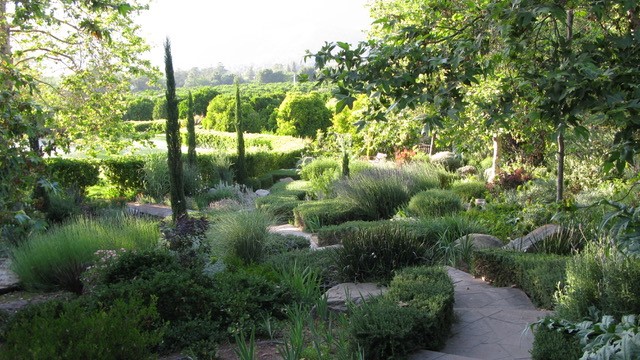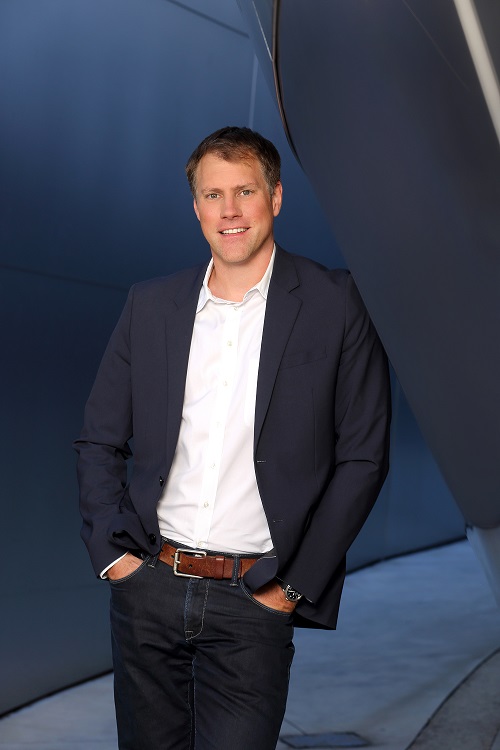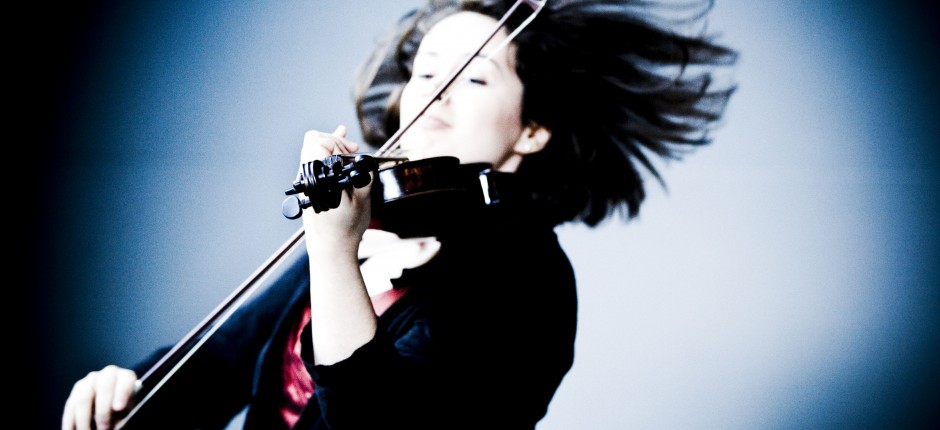Video: Barbara Hannigan on the 2019 Festival
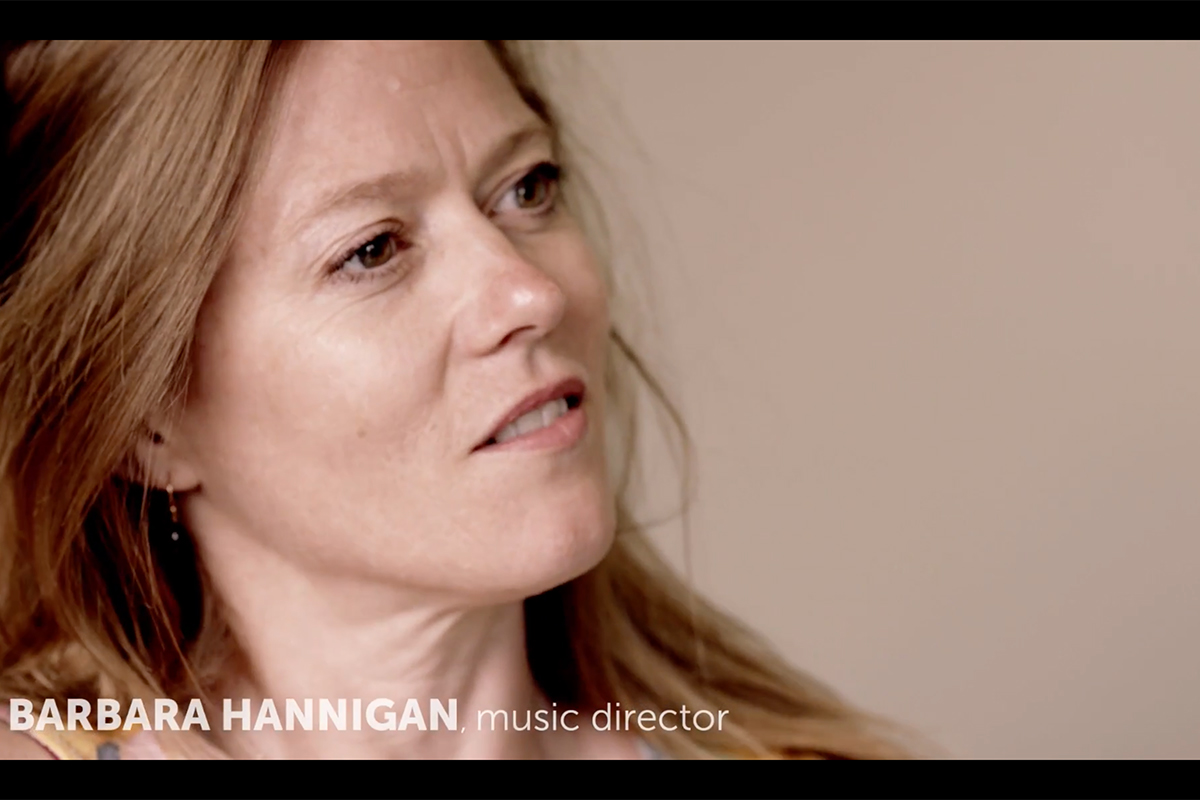
2019 Music Director Barbara Hannigan – conductor, singer, and mentor – discusses her artistic values and describes herself as a creative person intensely interested in the collaborative process.
The Ojai Music Festival Welcomes New Board Members
The Ojai Music Festival and Board Chair David Nygren announces the appointment of two new members of its Board of Directors, as well as the full slate of officers for the 2018-19 season voted in at the September annual meeting. Joining the 18-member Board of Directors is Stephan Farber and Judith Hale Norris.
Stephan Farber is a private wealth advisor working closely with multi-generation families who encounter distinctive challenges in managing and stewarding their wealth. Farber works with leading collectors of musical instruments and art. He has particular depth in wealth transfer strategies and tax-sensitive philanthropic initiatives. Prior to his career in banking, he worked for many years in the music industry with a wide range of artists including Philip Glass, David Bowie, and The Rolling Stones. A string instrument enthusiast, Stephan collects and plays pre-war Gibson mandolins and serves on the board of Arco Collaborative, established by internationally renowned violinist Jennifer Koh. He received his M.B.A. from the Wharton School at the University of Pennsylvania and B.A. from Oberlin College. Currently, he lives with his family in Houston, Texas.
Judith Hale Norris is the President of the Ojai Festival Women’s Committee. She also serves on the Board of the Ojai Education Foundation, the Steering Committee of the Ojai Women’s Fund, and as Co-Chair of the Council of Distinguished Advisers, Straus Institute of Resolution, Pepperdine University School of Law. She recently retired as an Adjunct Professor and Associate Director of the Investor Advocacy Clinic at Straus Institute for Dispute Resolution, Pepperdine University School of Law. Prior to her appointment in 2010 as Associate Director of the Investor Advocacy Clinic, she served as Vice President and Director for the Western Region of the Financial Industry Regulatory Authority (FINRA) Dispute Resolution with regional headquarters in San Francisco and Los Angeles. Before joining FINRA in 1986, She served as Chief Staff Counsel for the U.S Court of Appeals for the District of Columbia Circuit (DC) and for the United States Court of Appeals for the First Circuit (Boston). She also served as an Assistant United States Attorney for the District of Massachusetts and as a trial and appellate attorney for the U. S. Department of Justice in Washington, D. C. Norris received her Bachelor of Arts degree from the University of Maine and her Juris Doctor degree from Boston University School of Law. She received her Mediator Certificate from the Institute of Conflict Management.
The 2018-19 Board Officers are David Nygren, chairman; Barry Sanders, vice-chair strategic planning; David Oxtoby, vice-chair governance; Cathryn Krause, secretary; and Jerrold Eberhardt, treasurer.
About the Ojai Music Festival
From its founding in 1947, the Ojai Music Festival has created a place for groundbreaking musical experiences, bringing together innovative artists and curious audiences in an intimate, idyllic setting 80 miles northwest of Los Angeles. The Festival presents broad-ranging programs in unusual ways with an eclectic mix of rarely performed music, refreshing juxtapositions of musical styles, and works by today’s composers. The four-day festival is an immersive experience with concerts, free community events, symposia, and social gatherings. Considered a highlight of the international music summer season, Ojai has remained a leader in the classical music landscape for seven decades.
Through its unique structure of the Artistic Director appointing an annual Music Director, Ojai has presented a “who’s who” of music including Aaron Copland, Igor Stravinsky, Olivier Messiaen, Michael Tilson Thomas, Kent Nagano, Pierre Boulez, John Adams, Esa-Pekka Salonen, Robert Spano, Pierre-Laurent Aimard, David Robertson, Eighth Blackbird, George Benjamin, Dawn Upshaw, Leif Ove Andsnes, Mark Morris, Jeremy Denk, Steven Schick, Peter Sellars, and Vijay Iyer. Following Patricia Kopatchinskaja, Ojai will welcome Music Director Barbara Hannigan (2019), Matthias Pintscher (2020), and Mitsuko Uchida (2021).
As the Ojai Music Festival approaches its 75th anniversary and looks toward the future with recently appointed Artistic Director Chad Smith, who will take the helm in 2020, the innumerable contributions by Thomas W. Morris will continue to be realized through the 2019 Festival and beyond. Under Mr. Morris’ creative watch, the Festival continues to push boundaries and scope; explore each music director’s individual perspective, creativity, and artistic communities; invite an ever-broadening roster of artists; and build connections across musical communities with through-curated programming for each Festival.
73rd Ojai Music Festival
The Festival’s 73rd installment – June 6-9, 2019 – celebrates and explores the creative artistic force of Music Director Barbara Hannigan as conductor, singer, and mentor. The four-day immersive experience will be a synthesis of dark and light: chiaroscuro with music curated by Hannigan that resonates deeply with her interests and collaborations. Music will include Stravinsky’s The Rake’s Progress and other vocal works by Schoenberg, Grisey, Turnage, and Vivier. The Festival will also feature the American debut of LUDWIG orchestra and members of Hannigan’s new Equilibrium mentoring initiative.
Series Passes for 2019 Ojai Music Festival
Advance 2019 series subscriptions are available for purchase at OjaiFestival.org or by calling (805) 646-2053. Ticket prices range from $165 to $925 for reserved seating and lawn series start at $75.
Up Close: Patron Memories
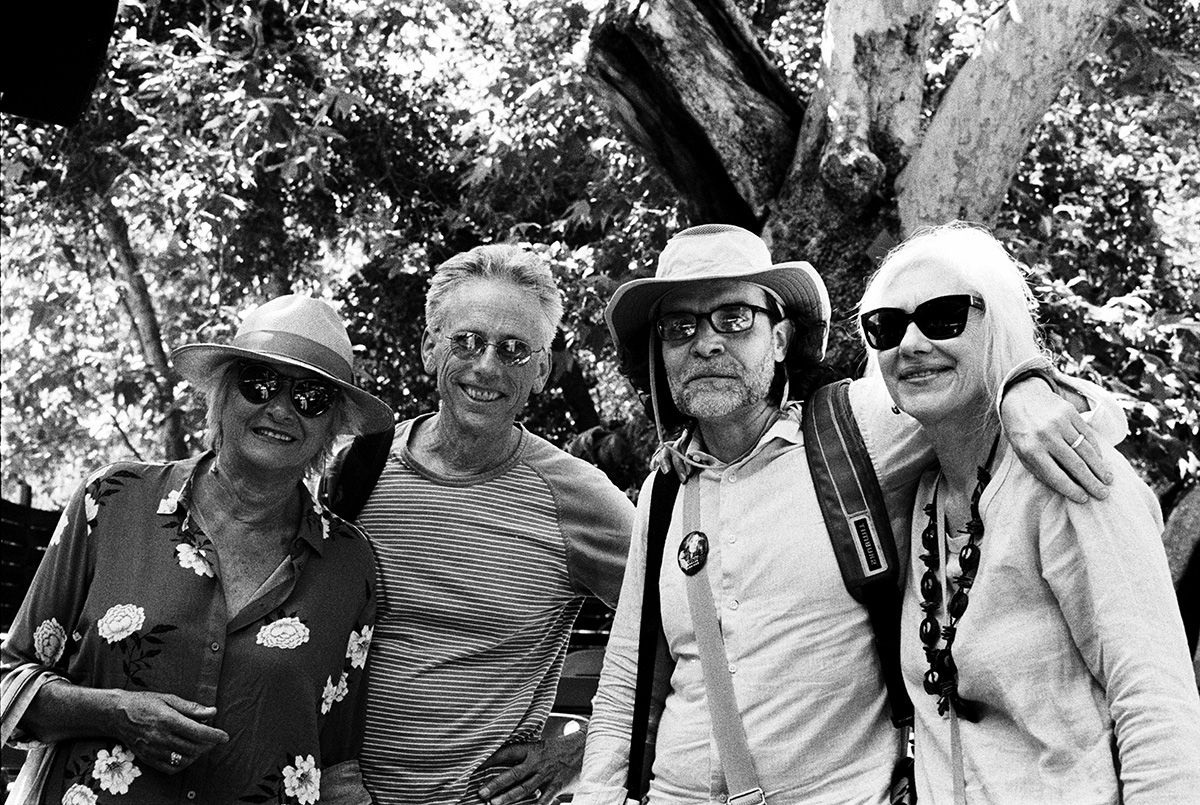
The Festival continues to thrive because of the enthusiastic support of its friends and patrons. Enjoy a few snapshots of a memorable Festival moment!
[ngg_images source=”galleries” container_ids=”109″ exclusions=”1202″ display_type=”photocrati-nextgen_pro_thumbnail_grid” override_thumbnail_settings=”0″ thumbnail_width=”240″ thumbnail_height=”160″ thumbnail_crop=”1″ images_per_page=”12″ border_size=”0″ border_color=”#eeeeee” spacing=”2″ number_of_columns=”3″ display_type_view=”default” ngg_triggers_display=”never” captions_enabled=”1″ captions_display_sharing=”0″ captions_display_title=”1″ captions_display_description=”1″ captions_animation=”slideup” order_by=”sortorder” order_direction=”ASC” returns=”included” maximum_entity_count=”500″]Images courtesy of Frank Gruber.
2019 Ojai Music Festival Featuring Music Director Barbara Hannigan
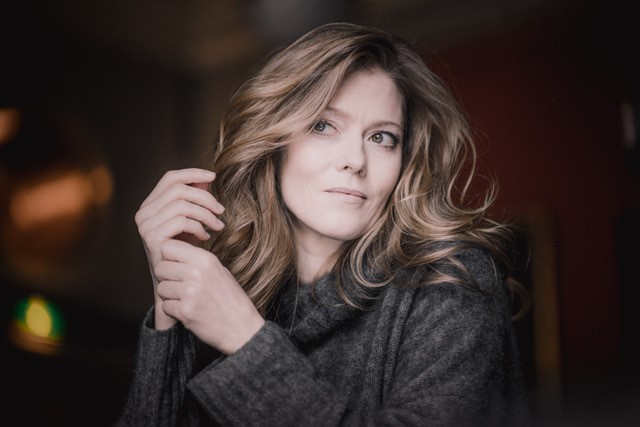

The Festival will look back in tribute to composers with deep historical relationships to Ojai – Igor Stravinsky, Arnold Schoenberg, and Olivier Messiaen – and will look forward to major voices of our time, including Gerard Grisey, Mark-Anthony Turnage, John Luther Adams, and John Zorn.
Barbara as a conductor in semi-staged performance of Stravinsky’s Rake’s Progress (complete)
Barbara as a performer singing in Gerard Grisey’s Quatre Chants pour franchir le seuil conducted by Steven Schick, singing Arnold Schoenberg’s String Quartet No. 2, and singing/conducting George Gershwin’s selections from the Grammy-winning CD Girl Crazy
Barbara as a mentor with seven young singers in residence from her new mentoring initiative Equilibrium
****
The 73rd Ojai Music Festival, June 6-9, 2019, celebrates and explores the creative breadth of Music Director Barbara Hannigan, as conductor, singer, and mentor. Joining Ms. Hannigan will be the US debut of her mentoring initiative for young professional artists, Equilibrium (EQ), as well as the US debut of the orchestral collective from Amsterdam, LUDWIG, with whom Ms. Hannigan made her Grammy Award-winning conducting debut CD “Crazy Girl Crazy” in 2017.
2019 Music Director Barbara Hannigan shared,
“What does the Ojai Music Festival mean to me? Possibility. Embrace. Challenge. Electricity. Resonance. The Ojai Festival is an atelier where we are invited to gather, as audience and performers, where we are in communion with one another, witnessing the act of live performance. Storytelling, dramaturgy, heart to heart exchange are at the center of my programming choices. This Festival will be a synthesis of dark and light – chiaroscuro – and brings the human voice to the forefront of many events, exploring the various ways composers have been inspired to express themselves through the interplay of text and music.
The Ojai Festival is a more than a playground: it is a circus tent, a jungle gym, an obstacle course, a field of dreams. There are risks being taken, and we open ourselves with curiosity, to possibilities of sound, of flying and falling, of being overwhelmed. Performers always have a degree of courage, but the same must be said of the loyal, curious and inspiring audiences of the Ojai Festival. I simply can’t wait.”
The 2019 Festival marks the sixteenth and final year under the artistic direction of Thomas W. Morris. As the Ojai Music Festival approaches its 75th anniversary and looks toward the future, the innumerable contributions by Mr. Morris will continue to be realized through the 2019 Festival and beyond. Under his creative watch, the Festival pushed boundaries and scope; explored each music director’s individual perspective, creativity, and artistic communities; invited an ever-broadening roster of artists; expanded in scope into an immersion experience over four days; introduced live and archival video streaming of concerts and talks; and built connections across musical communities with through-curated programming for each Festival.
Artistic Director Thomas W. Morris said,
“One of the most rewarding parts of my artistic director responsibilities has been selecting the annual music director – an ever-evolving process informed by the extraordinary resilience and receptivity of the Ojai Music Festival and its audience, as well as the astonishing wealth of artistic talent that exists. The world of music is so different than it was sixteen years ago with the artistic possibilities exploding, the breadth and depth of creative talent expanding, artificial boundaries between genres disappearing, and the appetite for audiences for more intense and distinctive musical experiences increasing. It is those forces that have propelled the sequence of music director appointments over the years – from a singer, to a pianist, to a choreographer, to a pianist/author, to a percussionist/conductor, to a stage director, to an improviser/composer, to a violinist, and to a singer/conductor/mentor. I would be less than honest to admit that this was a sequence well thought out in advance; in fact, the process was organic – an evolving adventure as each music director opened up new possibilities for the next in the context of an ever-changing environment. In many ways, Ojai is an ever self-reinforcing and regenerative flywheel of creativity.
I am thrilled that Barbara Hannigan is my creative partner in 2019, my last after sixteen glorious and stimulating years. Barbara, a dear friend and a great artist, is a beacon of extraordinary creativity through her incredible artistry and ceaseless curiosity and commitment to the future. She represents everything an artist of the future must be. A renowned soprano, conductor and musician, she demonstrates the values that define the next generation of great artistic leaders with her new Equilibrium mentoring initiative for young artists. It will be a festival of provocative new sounds, imaginative productions, palatable energy, and outright fun – what I see as a fitting capstone to what has been an invigorating, stimulating, and daunting adventure for me over these years.”
Launching the Festival concert line-up on Thursday, June 6 will be Ms. Hannigan’s work from the podium, Stravinsky’s neoclassic opera, The Rake’s Progress, a Faustian fable for our time addressing the subjects of love, laziness, and greed. Anne Truelove was one of the first operatic roles Ms. Hannigan ever sang, and the opera holds a special place in her heart. Ms. Hannigan conducts this semi-staged performance featuring members of her Equilibrium mentoring initiative as the cast and the Los Robles Master Chorale in their Ojai debut. The production, directed by Linus Fellbom, is a co-production with the Gothenburg Symphony in Sweden, the Klara Festival in Brussels, the Munich Philharmonic in Germany, plus the Aldeburgh Festival. The Rake’s Progress is new to Ojai with the exception of a performance in 1962 of one scene from the opera, and has been very rarely performed in Southern California.During the Festival, Ms. Hannigan also conducts works by Arnold Schoenberg, Igor Stravinsky, and Claude Vivier.
As a singer, Ms. Hannigan will perform Gérard Grisey’s masterpiece, Quatre chants pour franchir le seuil,a 45-minute song cycle for soprano and 16 instruments which explores the passage from life into death. Quatre chants pour franchir le seuil, completed just days before Grisey’s death, will be conducted by Ojai’s 2015 Music Director Steven Schick. Ms. Hannigan will perform in Arnold Schoenberg’s sensual String Quartet No. 2 for soprano & string quartet with the JACK Quartet. Ms. Hannigan will serve as both singer and conductor in Girl Crazy Suite, a touching and infectious arrangement by Tony-award winning Bill Elliott, which is part of Hannigan’s 2017 Grammy-winning album Crazy Girl Crazy, that will close the Festival on Sunday, June 9. Also featured will be Ms. Hannigan and pianist Stephen Gosling performing the US premiere of John Zorn’s Jumalattaret, an extraordinary quest for soprano and piano inspired by the goddesses of Finland’s Kalevala saga.
In January 2017, Ms. Hannigan launched the Equilibrium (EQ) initiative to mentor 21 young professional musicians in the first substantial phase of their careers. EQ includes intensive workshop retreats, which focus on developing and strengthening the skills needed for sustaining a fulfilling career, as well as offering performance opportunities with Ms. Hannigan and others. EQ artists are selected from an international field of applicants for their talent, musicianship, passion, drive, curiosity, discipline, versatility, and creativity. Seven of these young artists will form the cast of The Rake’s Progress, as well as perform additional music by Igor Stravinsky, Claude Vivier, Mark-Anthony Turnage. On Saturday, June 8, the singers will participate in a special program of folk songs from their diverse native countries entitled, Rites of Passage.
LUDWIG,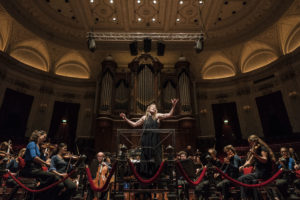 the celebrated collective from Amsterdam, with whom Ms. Hannigan works closely and collaborated with on the recent Grammy and Juno award-winning album Crazy Girl Crazy(Alpha Classics), makes its Ojai and US debut with the 2019 Festival. Formed in 2012, LUDWIG distinguishes itself artistically and in terms of its range and flexibility. Varying in size from a single soloist to a full-scale symphonic orchestra, LUDWIG carefully crafts its diverse programming. In 2015, LUDWIG received The Art of Impact grant for their pioneering research project Ludwig and the Brain, which, in cooperation with leading scientists, explores innovative ways music can have positive effects on health and education.
the celebrated collective from Amsterdam, with whom Ms. Hannigan works closely and collaborated with on the recent Grammy and Juno award-winning album Crazy Girl Crazy(Alpha Classics), makes its Ojai and US debut with the 2019 Festival. Formed in 2012, LUDWIG distinguishes itself artistically and in terms of its range and flexibility. Varying in size from a single soloist to a full-scale symphonic orchestra, LUDWIG carefully crafts its diverse programming. In 2015, LUDWIG received The Art of Impact grant for their pioneering research project Ludwig and the Brain, which, in cooperation with leading scientists, explores innovative ways music can have positive effects on health and education.
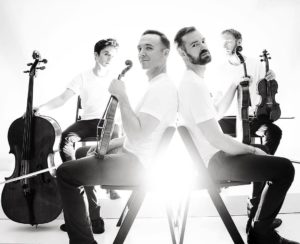 The JACK Quartet, which made its Ojai debut at the 2018 Festival, returns performing Schoenberg’s String Quartet No. 2 with Ms. Hannigan as soprano, Marc Sabat’s Euler Lattice Spirals Scenery, Tyshawn Sorey’s Everything Changes, Nothing Changes, Catherine Lamb’s String Quartet, and a two-part concert of works by John Zorn, including three piano trios with Stephen Gosling, and two quartets The Unseenand The Alchemist. Deemed “superheroes of the new music world” (Boston Globe), JACK is dedicated to the performance, commissioning, and spread of new string quartet music. Comprising violinists Christopher Otto and Austin Wulliman, violist John Pickford Richards, and cellist Jay Campbell, the group collaborates with composers of our day and was recently named the 2018 Ensemble of the Year by Musical America.
The JACK Quartet, which made its Ojai debut at the 2018 Festival, returns performing Schoenberg’s String Quartet No. 2 with Ms. Hannigan as soprano, Marc Sabat’s Euler Lattice Spirals Scenery, Tyshawn Sorey’s Everything Changes, Nothing Changes, Catherine Lamb’s String Quartet, and a two-part concert of works by John Zorn, including three piano trios with Stephen Gosling, and two quartets The Unseenand The Alchemist. Deemed “superheroes of the new music world” (Boston Globe), JACK is dedicated to the performance, commissioning, and spread of new string quartet music. Comprising violinists Christopher Otto and Austin Wulliman, violist John Pickford Richards, and cellist Jay Campbell, the group collaborates with composers of our day and was recently named the 2018 Ensemble of the Year by Musical America.
Oliver Knussen, who passed away at the early age of 66 on July 8, 2018, was Ojai’s Music Director in 2005, and worked extensively with Barbara Hannigan in the 1990s. In tribute, the Festival will offer a program of Mr. Knussen’s music including ensemble and piano pieces. Thomas W. Morris said on his passing, “Olly, as he was known to everyone, was a giant musician – figuratively and literally – a bear of a man with the gentlest and kindest disposition of anyone I have ever known. I was always amazed about the breadth of his openness and curiosity for music, and he simply knew and loved more music than anyone I knew. His music was meticulously crafted, finely etched, and deeply inspired. He is profoundly missed professionally and personally.”
Additional featured music includes Terry Riley’s seminal In C, receiving its second Ojai Festival performance and featuring 2019 Festival artists and William Walton’s entertainment, Façade, a concoction for speaker and six instruments on humorous poems by Edith Sitwell, will be narrated by Barbara Hannigan and surprise guests.
Free Community Concerts
The Festival continues to build on its commitment to reach broader audiences with several opportunities for the community to experience Festival offerings. Over the course of the first three afternoons of the 2019 Festival, percussionist Steven Schick will perform the eight movements of John Luther Adams’ The Mathematics of Resonant Bodies. Works by John Luther Adams have been performed for Ojai audiences and have included Sila, Inuksuit (co-commissioned by the Ojai Music Festival), and recently Everything that Rises performed at the 2018 Festival.
Ojai Films
For the first time since 2014, the Ojai Music Festival welcomes the return of Ojai Films, a series of two screenings during the weekend at the Ojai Presbyterian Church, while the Ojai Playhouse continues its reconstruction. On Friday, June 7 the Festival will include, I’m a creative animal: A Portrait of Barbara Hannigan produced in 2014 by SRF and directed by Barbara Seiler. On Saturday, June 8, the Festival will present the US premiere of Taking Risks, a documentary produced by Accentus Music on the birth of Equilibrium which follows its inception through all stages of the casting and production, and culminating in the world premiere of the semi-staged production of The Rake’s Progress (which is performed in Ojai June 6) in Gothenburg in December 2018.
Ojai Talks
The 2019 Festival begins with Ojai Talks hosted by Ara Guzelimian, former Festival Artistic Director and current Dean and Provost of The Juilliard School. On Thursday, June 6, a three-part series of discussions will begin with an exploration of Barbara Hannigan’s Equilibrium (EQ) initiative, with Ms. Hannigan and EQ artists. Mr. Guzelimian will interview Thomas W. Morris on his sixteen-year tenure as Ojai’s Artistic Director for the second part, and the third part of the discussion series will speak to the reinvention of musical groups, with members of LUDWIG.
Additional on-site and online dialogue during the 2019 Festival includes Concert Insights, the pre-concert talks at the Libbey Bowl Tennis Courts with Festival artists led by resident musicologist Christopher Hailey. Pre-concert interviews with artists are broadcast through the Festival’s free live streaming program, hosted by content-expert individuals.
2018 Festival Photos
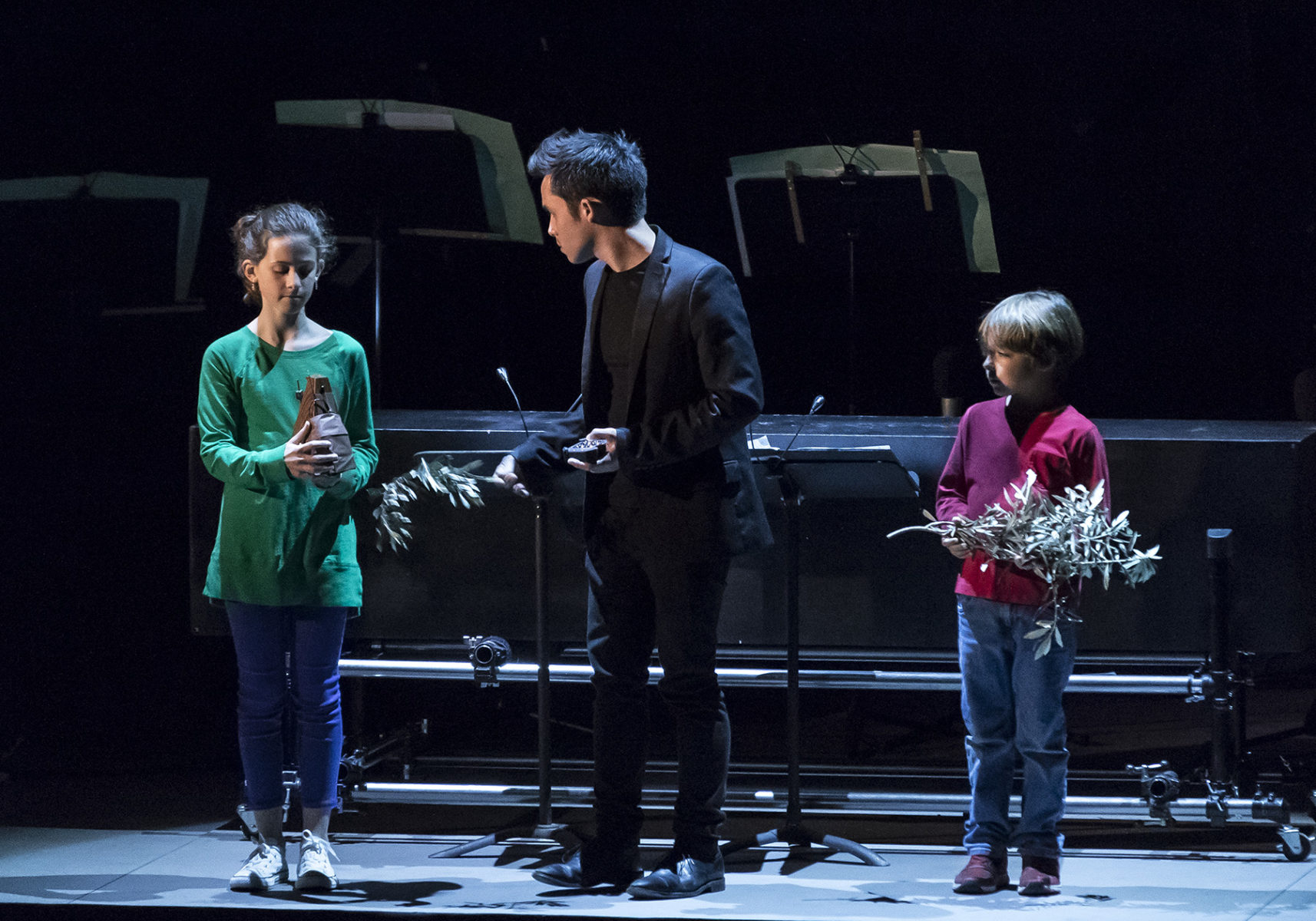
Here are some photos from this year’s Festival! Many thanks to David Bazemore and Stephen Adams for images.
[ngg_images source=”galleries” container_ids=”104″ display_type=”photocrati-nextgen_basic_thumbnails” override_thumbnail_settings=”0″ thumbnail_width=”240″ thumbnail_height=”160″ thumbnail_crop=”1″ images_per_page=”20″ number_of_columns=”3″ ajax_pagination=”1″ show_all_in_lightbox=”0″ use_imagebrowser_effect=”0″ show_slideshow_link=”0″ slideshow_link_text=”[Show slideshow]” ngg_triggers_display=”never” order_by=”sortorder” order_direction=”ASC” returns=”included” maximum_entity_count=”500″]Meet Our 2018 Interns!
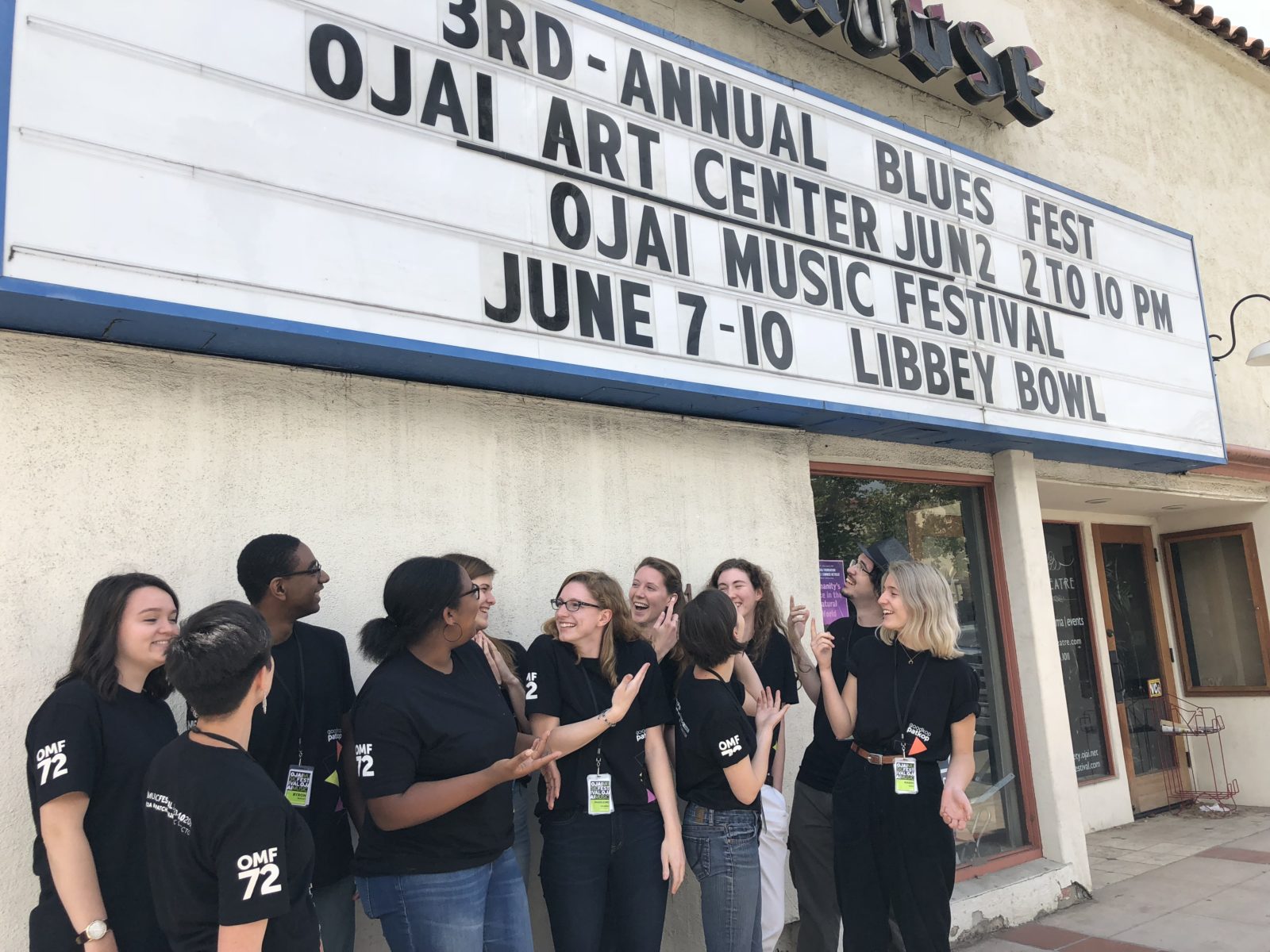
Each year, the Ojai Music Festival Arts Management Internship Program welcomes 12-14 college students and recent graduates to go behind the scenes of a renowned summer music festival. We are very excited to introduce this year’s wonderful interns!
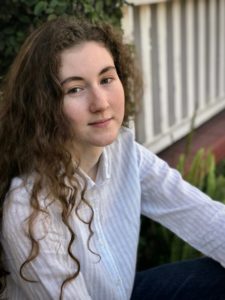 Glenna Adkins:
Glenna Adkins:
Glenna Adkins is a cellist and improviser who grew up in Los Angeles. She currently studies music and writing at Sarah Lawrence College in New York. As an instrumentalist, composer, and avid music listener, she is passionate about the performance of new music, as well as the collaborative process between artists. Inspired by the intersection of different art forms, Glenna also composes and performs for works of derived theater and dance, exploring ideas of musical narrative through extended techniques. She has worked at REDCAT and at Reisinger Concert Hall and has recorded as a session musician in several film soundtracks. Additionally, Glenna is interested in issues of sustainability and has served as an Education Intern at the Science Barge in Yonkers, NY, giving school children guided tours of the institution’s hydroponic growing systems.
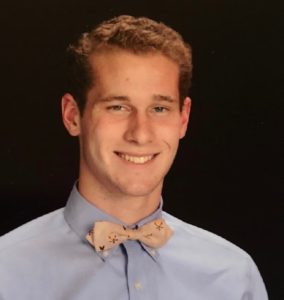 Peter Appleby:
Peter Appleby:
Peter Appleby is a resident of Santa Paula and has developed a great appreciation for community events and local music festivals. After graduating from Villanova Prep School this spring, Peter will be studying International Relations at California Lutheran University in the fall. An amateur musician himself, Peter has had the privilege of participating in Claire Chase’s performance of PAN in 2017 through the Ojai Music Festival. He is excited to return to Ojai this summer and is eager to help with the festival.
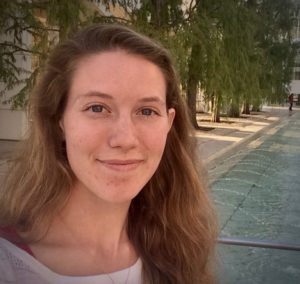 Zoe Appleby:
Zoe Appleby:
Zoe Appleby is a Southern California resident who is lucky enough to have been involved in the Ojai Music Festival for three years now. For undergraduate school, Zoe attended Thomas Aquinas College in Santa Paula, CA, where she studied the greatest works of Western thought and literature in a Great Books Program. After spending six weeks in the summer of 2017 in Rome, Italy, studying art history, she decided that the academic field of art history was where she passions lay. Zoe has since been accepted into UC Riverside’s Art History department as an MA student studying medieval art history. After eventually completing her Ph.D. at a different institution, she would be interested in both teaching and researching at the college level and perhaps curating at a museum. She is passionate about bringing the arts to the public, and she has found the Ojai Music Festival to be an amazing event for her to experience the worlds where art and business meet to make something truly beautiful. She recently held a curatorial internship at the Santa Paula Art Museum, an institution which, like the Ojai Music Festival, embodies the spirit of artistic progress and public outreach. Zoe can usually be found swimming at one of the Southern California beaches, or rock-climbing in the cliffs above Ojai.
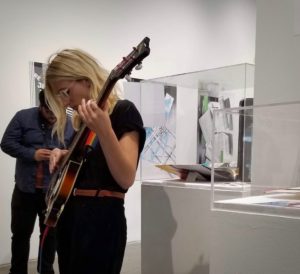 Maddi Baird:
Maddi Baird:
Maddi Baird is an undergraduate music composition major at San Diego State University. She has had a passion for music and the arts from a young age, and has carried this passion by playing French horn, bass guitar, and by playing in SDSU’s Javanese Gamelan. While studying under Dr. Joseph Waters and Dr. Chris Warren, she has developed a passion for synthesis and analog synthesizers. In the future, she hopes to pursue a graduate degree in film scoring. Within her first semester at SDSU, she has acquired a position at their student union as an Audio-Visual technician and is the recipient of the Frank McCarty Endowed Scholarship in Music Composition. Maddi spends her free time volunteering at Ship in The Woods, a nonprofit art museum. She also has a radio show for KCR College Radio.
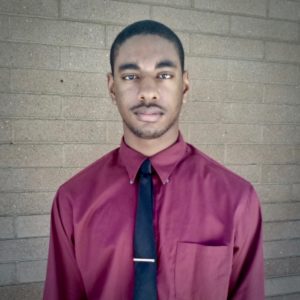 Byron Beasley:
Byron Beasley:
Byron Beasley studies music technology at San Diego State University. He has been playing musical instruments since the age of 9 and currently composes music for the Trombone Ensemble at San Diego State. Byron also works as a studio technician at San Diego State, and has experience working with a variety of clients on a daily basis. At the studio, Byron’s job consists of assisting clients with audio and visual productions.
In high school, he worked as a section leader of the brass section, and has performed with a variety of ensembles. Byron also has experience playing in jazz band, marching bands, and wind ensembles (with jazz band being his favorite). He loves to listen to jazz in his free time and enjoys exercising as well. Byron has also composed music for a few video games, and so his diverse experiences in music make him a well-rounded musician, producer, and composer. His greatest aspiration is to work in the music and entertainment industry. Byron loves working behind the scenes to ensure that a product can come to fruition.
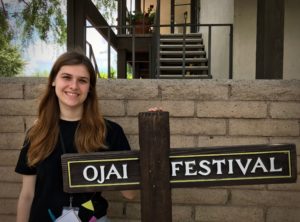 Kathryn Carlson:
Kathryn Carlson:
Kathryn Carlson is a cellist who will soon be receiving her diploma for her Bachelor of Music degree in Instrumental Performance with cello emphasis from the UCSB music department. She is interested in pursuing new music, which she became involved in during her sophomore year of high school after being introduced to it by her music theory teacher Mr. Hertzog (composer for the kung-fu film Bloodsport). She has been a member of the UCSB Ensemble for Contemporary Music (ECM) throughout her time at UCSB and has performed new works in various concerts, including the 2016 UCSB Summer Music Festival, and the Beethoven, New Music, and Cupcake Bar concert hosted by the Now Hear Ensemble. In 2016 she was awarded the ECM Distinguished Performance Award and has recently performed in master classes hosted by The Knights and the Juilliard String Quartet. Having been an intern for the 2017 Ojai Music Festival, she is looking forward to joining the fantastic Ojai Music Festival team once again.
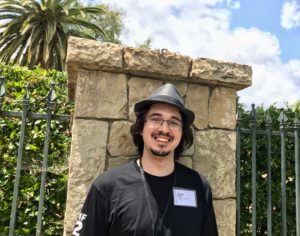 Alberto Cruz:
Alberto Cruz:
Alberto Cruz is a composer and recording engineer, currently studying composition at the California Institute of the Arts. During his time there, he has studied with, and continues to work with, Anne LeBaron, Matthias Webber, Karen Tanaka, Nora Kroll-Rosenbaum, John Baffa, and Bob Clendenen. He has fully committed himself to a curriculum at CalArts consisting of composition for film and media, as well as recording and mixing in both live and studio settings. Currently, Alberto works for the School of Film/Video at CalArts running various recording sessions for ADR, spoken word, foley, and music. He also works for the Herb Alpert School of music, recording for live and studio musicians, running a webcast/lighting board for live shows, and acting as a producer/promoter for various shows. When not at CalArts, he works as a studio intern for Matthew Snyder at Allegro Recordings. During his time at CalArts so far, Alberto has produced six shows, played clarinet and other instruments in numerous ensembles, written music for seven films, worked as a sound designer for two films, handled music preparation/orchestration for various established composers around LA, run countless recording sessions for animators, directors, solo musicians, large ensembles, and a large variety of people from other backgrounds, and written over ten performed works for the concert stage. Entering his fourth year of higher education, Alberto’s passion for film music and recording has been fully realized into a reality that he intends to pursue throughout the rest of his life.
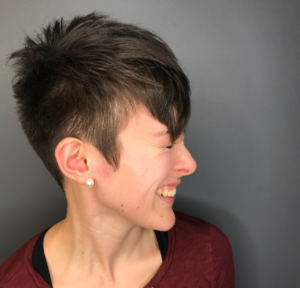 Jamie Leidwinger:
Jamie Leidwinger:
Jamie Leidwinger is a Baltimore-based composer. She received her MM in Composition at the Peabody Institute of Johns Hopkins, a BA in Music from Dickinson College, and her teachers include Pulitzer Prize-winner Du Yun, Amy Beth Kirsten, Douglas Buchanan, and David Smooke. Jamie previously interned with the Ojai Music Festival, Q2 Music (NYC, now NewSounds), the Artistic Director of Symphony Space (NYC), and recently produced Q2 Music’s Instagram takeover series, “A Day in the Life,” as a freelance contributor; she is currently an Associate Artist Fellow with Amy Beth Kirsten’s music-theatre ensemble HOWL. Current projects include a podcast featuring interviews with Peter Sellars, Alex Ross, and more (release: Summer 2018), a collaboration with Baltimore-based street choir Voices Rise, co-founding a women’s vocal chamber octet, and co-founding SENSE, a Baltimore-based interdisciplinary, immersive, and inclusive arts series.
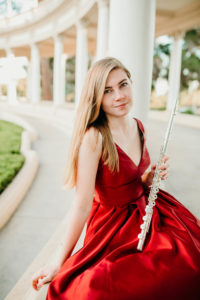 Emily Persinko:
Emily Persinko:
Emily Persinko has interned at the Ojai Music Festival for the past two years, working closely with the marketing department and the box office. Emily graduated from San Diego State University (SDSU) this spring where she studied music entrepreneurship and business and is currently pursuing a career in arts administration. Emily is an event stage manager for La Jolla Music Society, a production assistant at San Diego Youth Symphony and Conservatory, and Assistant Operations Coordinator at Art of Élan. Emily has also recently interned at the San Diego Symphony in the development department and The Broad Stage in Santa Monica as an artistic intern. Emily has held positions as the principle flutist of the SDSU Wind Symphony and Chamber Orchestra. She also teaches at a private flute studio in San Diego and recently performed her senior flute recital.
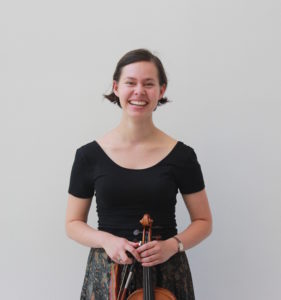 Molly Tucker:
Molly Tucker:
Molly Tucker, from Thousand Oaks, California, is currently in her third year at Oberlin College and Conservatory where she is pursuing degrees in Violin Performance and Economics. As a violinist, she has participated in such festivals as Bowdoin International Music Festival, Madeline Island Chamber Music Camp, The Apple Hill Center for Chamber Music, and the Montecito International Music Festival. Additionally, Molly has been a soloist with the Thousand Oaks Philharmonic and the California State University Northridge Youth Philharmonic. Her musical explorations have taken her to contemporary and Baroque music, as well as folk traditions. She has performed in an Oberlin Contemporary Music Ensemble performance of Hans Abrahamsen’s Schnee, as well as an Oberlin premiere of Celso-Garrido Lecca’s String Quartet No. 2, and has led and soloed with the Oberlin Baroque Orchestra. Molly has also fiddled since the age of seven and has attended Ashokan Music and Dance Camps and The Festival of American Fiddle Tunes. As a lover of contra dance, she has played dances in both California and New Hampshire, and regularly plays for the monthly dances at Oberlin. Molly is a co-founder of Quartet Davis, a string quartet that plays original arrangements of folk and jazz, which was one of the recipients of Oberlin’s Flint Initiative Grant for a three-week Midwest and East Coast tour in January 2018. She is also a part of Caraway House, a fiddle and voice duo that performs tunes from Scandinavian and Old Time traditions. In January 2017, she traveled to Amman, Jordan with an Oberlin string quartet to play at schools and public venues, including a performance with the Jordan Orchestra sponsored by the United States Embassy. She has studied with Marilyn McDonald, Linda Rose, and Kim Kilgore, and has had the opportunity to work with renowned musicians such as Kikuei Ikeda, the Punch Brothers, Fabian Almazan, The Calder Quartet, Billy Childs, and Christian Howes. Outside of her musical life, she is active in the Oberlin Student Cooperative Association, organizes the Oberlin Quaker Student Group, and works for Oberlin Conservatory Admissions.
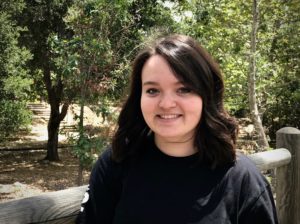 Sarah Voshall:
Sarah Voshall:
Sarah Voshall is a pianist, collaborator, and teacher based in Los Angeles county. She is currently a third year piano performance major at the California Institute of the Arts in Valencia, CA. In high school, she studied improvisation with Daniel Hopkins, who remains a constant source of inspiration. At CalArts, she is privileged to study piano with Ming Tsu, and greatly appreciates the mentorship of Vicki Ray. She has also studied harpsichord with Tisha Mabee. Sarah’s current interests lie in methodically exploring the keyboard works of Bach alongside the surprisingly parallel piano pieces of Bartok. Recently, Sarah has found an interest in learning and performing chamber works with a trio of fellow CalArtians. As a means of cultivating a culture of music (and paying the bills), Sarah has been giving private piano lessons to students of all ages for the past decade. Sarah also teaches piano classes at West Creek Academy to second and third graders, a group of musicians whose youthful enthusiasm continues to delight and exasperate her in equal parts. In her spare time, Sarah enjoys spending time with her little sister who educates her in the memes of the day and forces her to listen to musical theatre soundtracks.
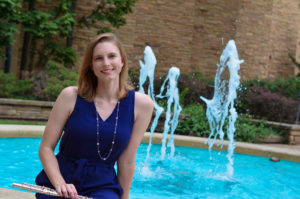 Madeleine Wilmsen:
Madeleine Wilmsen:
Madeleine Wilmsen is a flute student at the University of Kansas and received her Bachelor of Arts in Music with a minor in Psychology in May of 2018. While attending undergrad, Madeleine participated in numerous ensembles and chamber groups. Between the years 2015 and 2017, Madeleine was a member of a flute and percussion duo that premiered new works by in-residence composers. She performed as principal player of the KU Symphony Orchestra during the Spring of 2017 and is currently the principal flutist of the KU Wind Ensemble. This spring, KUWE will perform a Reach Out Kansas commissioned piece at the Kennedy Center in Washington D.C. and will be recording a new album. For the last three years, Madeleine has served as President and founding member of the KU Flute Club. She was instrumental in the creation of the club and worked to establish many yearly events, including the annual KU Flute Day in the spring. During the fall of 2017, Madeleine worked as a Development intern at the Kansas City Symphony where she learned the ins and outs of a major non-profit and frequently communicated with symphony donors. She plans on earning a MM in flute performance and furthering her career in music (whether it be performing, teaching, or arts management).
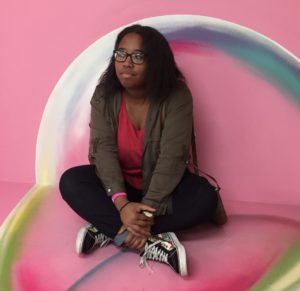 Dominique Wright:
Dominique Wright:
Dominique Wright just finished her sophomore year at Occidental College in Los Angeles, CA where she is an Economics Major and Flute Performance Minor. She is interested in continuing her work in social media marketing and is eager to work for larger companies and to gain further experience in management. Dominique has also played the flute for ten years. When she was just beginning her musical studies, she lost her flute at school. When a mother at her school heard about the lost instrument, she went home to find her old flute and brought it back to school so that Dominique could continue playing. Since experiencing that gesture of kindness, Dominique has not wanted to stop playing music. This June will be her second time working with the Ojai Music Festival and she cannot wait to take a part in the festival again.
2018 Live Stream Schedule
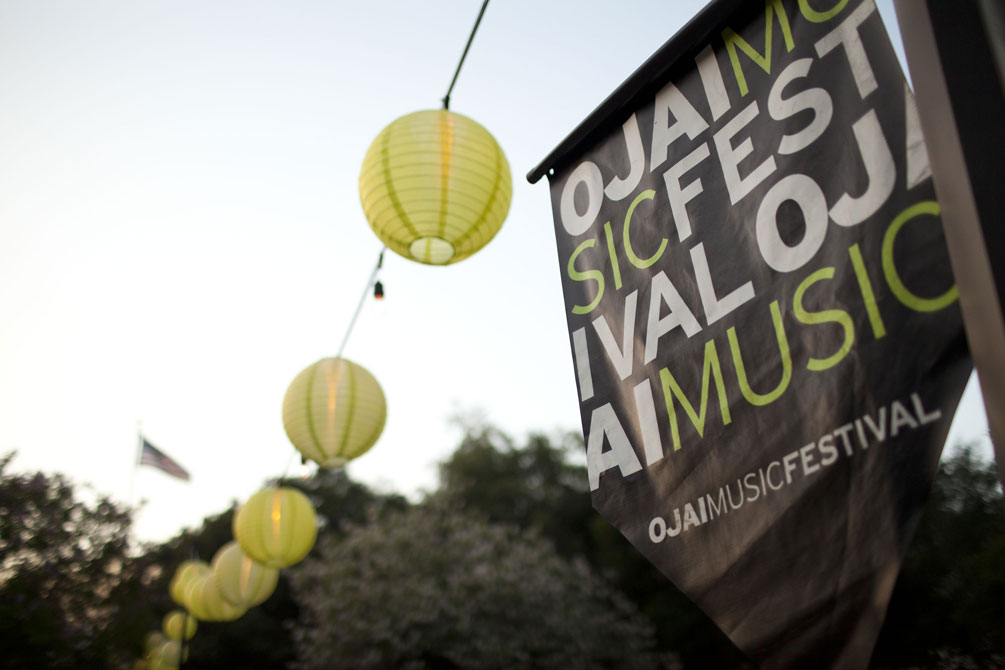
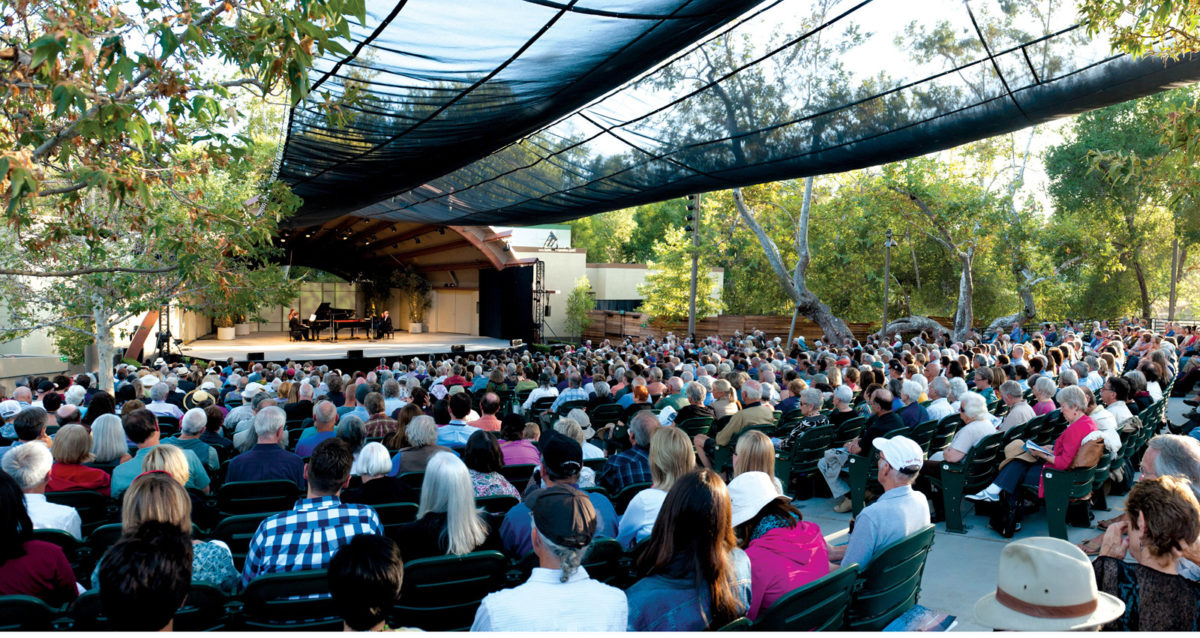
Special thanks to Lynn Bremer for underwriting support of the live streaming programs.
Produced and filmed by Live Concert Productions.
THURSDAY, JUNE 7
| Start Time | Event |
| 8:30 PM | Live with Smith & Kotcheff |
| 9:00 PM | Evening Concert BYE BYE BEETHOVEN |
| 10:20 PM | Talk Back Q & A Patricia Kopatchinskaja, MCO members |
FRIDAY, JUNE 8
| Start Time | Event |
| 1:00 PM | Afternoon Concert A Singular Vision: Part I |
| 2:00 PM | Interview with Michael Hersch |
| 2:30 PM | Afternoon Concert A Singular Vision: Part II |
| 3:45 PM | Interview with Barbara Hannigan |
| 4:00 PM | Video on Demand (VOD) Music at Dawn Replay |
| 5:05 PM | Video on Demand Ojai Talks Part 1 Replay |
| 7:30 PM | Evening Concert Across Time: Part I |
| 8:30 PM | Interview with Patricia Kopatchinskaja |
| 9:00 PM | Evening Concert Across Time: Part II |
| 10:30 PM | Free Community Concert John Luther Adams: Everything That Rises |
SATURDAY, JUNE 9
| Start Time | Event |
| 1:00 PM | Afternoon Concert With Abandon: Part I |
| 2:00 PM | Interview with Jay Campbell |
| 2:30 PM | Afternoon Concert With Abandon: Part II |
| 3:45 PM | Interview with Maria Ursprung |
| 4:30 PM | Video On Demand Ojai Talks Part 2 REPLAY |
| 5:35 PM | Video On Demand Music at Dawn REPLAY |
| 6:30 PM | Video On Demand Ojai Talks Part 3 REPLAY |
| 7:30 PM | Evening Concert Looking Inward |
| 8:30 PM | Interview with Ah Young Hong |
| 9:00 PM | Evening Concert Dies Irae (West Coast Premiere) |
| 10:30 PM | Talkback Q&A Patricia Kopatchinskaja, Maria Ursprung, Jay Campbell, Christian Heubes from MCO with Tom Morris |
SUNDAY, JUNE 10
| Start Time | Event |
| 1:00 PM | Afternoon Concert Exploring the Expanse: Part I |
| 2:00 PM | Interview with MCO Members |
| 2:30 PM | Afternoon Concert Exploring the Expanse: Part II |
| 3:45 PM | Interview with Anthony Romaniuk |
| 4:30 PM | Evening Concert A Devil’s Bargain and Some Earthly Delights |
| 5:30 PM | Interview with Thomas W. Morris |
Barbara Hannigan, 2019 Music Director
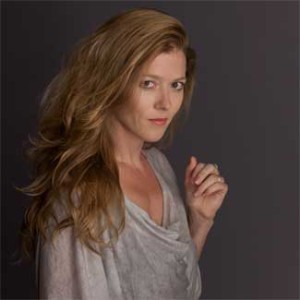 Nova Scotian musician Barbara Hannigan divides her time between singing on the world’s major stages and conducting leading orchestras. The Berlin Philharmonic, Münchner Philharmoniker, Gothenburg Symphony, Orchestra dell’Accademia Nazionale di Santa Cecilia, Mahler Chamber Orchestra, and the Toronto Symphony are among the orchestras with whom she holds close relationships. Barbara has worked with the most prominent conductors, including Simon Rattle, Kent Nagano, Esa-Pekka Salonen, Andris Nelsons, Yannick Nézet-Séguin, Kirill Petrenko, David Zinman, Vladimir Jurowski, Antonio Pappano, Alan Gilbert, and Reinbert de Leeuw. Her commitment to the music of our time has led to an extensive collaboration with composers including Boulez, Dutilleux, Ligeti, Stockhausen, Sciarrino, Barry, Dusapin, and Abrahamsen.
Nova Scotian musician Barbara Hannigan divides her time between singing on the world’s major stages and conducting leading orchestras. The Berlin Philharmonic, Münchner Philharmoniker, Gothenburg Symphony, Orchestra dell’Accademia Nazionale di Santa Cecilia, Mahler Chamber Orchestra, and the Toronto Symphony are among the orchestras with whom she holds close relationships. Barbara has worked with the most prominent conductors, including Simon Rattle, Kent Nagano, Esa-Pekka Salonen, Andris Nelsons, Yannick Nézet-Séguin, Kirill Petrenko, David Zinman, Vladimir Jurowski, Antonio Pappano, Alan Gilbert, and Reinbert de Leeuw. Her commitment to the music of our time has led to an extensive collaboration with composers including Boulez, Dutilleux, Ligeti, Stockhausen, Sciarrino, Barry, Dusapin, and Abrahamsen.
Unforgettable operatic appearances include the title role in a “chameleonic and compelling” (Gramophone) Lulu in Krszysztof Warlikowski’s staging at La Monnaie, and more recently Lulu at Hamburg Staatsoper conducted by Kent Nagano and directed by Christoph Marthaler; the title role of Pelléas et Mélisande in Katie Mitchell’s staging at the 2016 Festival d’Aix-en-Province conducted by Esa-Pekka Salonen and in Krszysztof Warlikowski’s more recent production at the Ruhrtriennale in Germany; and a fearless interpretation of Marie as a flame in the darkness in Zimmermann’s Die Soldaten at the Bayerische Staatsoper—a hugely acclaimed presentation directed by Andreas Kriegenberg and conducted by Kirill Petrenko, for which she won the Faust Award in Germany. She made her Opéra national de Paris debut in 2015 with La Voix humaine again in a Warlikowski production and returned in April 2018 to reprise the role. She created the role of Ophelia in Brett Dean’s Hamlet at the Glyndebourne Festival in summer 2017 and created the role of Agnes in George Benjamin’s Written on Skin, a production which has garnered rave reviews worldwide, with most recent performances at New York’s Lincoln Center (2015) and London’s Royal Opera House (2017); and had the world premiere of Benjamin’s new opera also at London’s Royal Opera House.
Recently appointed as Principal Guest Conductor of the Gothenburg Symphony in Sweden, Ms. Hannigan made her conducting debut in 2011 at the Chatelet in Paris, and her path since that time has been a constant creative development, having created special programs for the Toronto Symphony, Danish National and Swedish Radio symphony orchestras, Mahler Chamber Orchestra, L’Orchestre Philharmonique de Radio France, and Münchner Philharmoniker, as well as the orchestra of the Munich Staatsoper.
In 2017, Ms. Hannigan released her first album as both singer and conductor, with Holland’s LUDWIG orchestra as the orchestral force, on Alpha Classics, entitled Crazy Girl Crazy. The album features works by Berio, Berg, and a specially commissioned Gershwin arrangement by Bill Elliott, as well as a bonus dvd by Mathieu Amalric. The album has won both the Grammy and Juno awards for best classical vocal album.
Ms. Hannigan’s other recordings have garnered awards from Gramophone, Edison, Victoires de la Musique and the Royal Philharmonic Society. Other awards include Singer of the Year (Opernwelt, 2013), Musical Personality of the Year (Syndicat de la Presse Francaise, 2012), Ehrenpreise (Preis der Deutschen Schallplattenkritik 2018), and Rolf Schock Prize for Musical Arts (2018).
Recently appointed as a member to the Order of Canada (2016), Ms. Hannigan’s life as an artist has been the subject of several documentaries: Accentus Music’s acclaimed documentary I’m a creative animal, produced at Lucerne Festival 2014 where she was Artiste Etoile, Dutch television’s Canadees Podiumdier (NTR 2014), as well as three films by Mathieu Amalric: C’est presque au bout du monde, Lulu Variations, and Music is Music.
In 2017 Ms. Hannigan created Equilibrium, an international mentoring initiative for young professional musicians, and chose 21 participants from a total of 350 applicants from 39 countries to participate in Equilibrium’s first season (2018/19), which will have over 20 performances with four partner orchestras in works including Stravinsky’s The Rake’s Progress, Mozart’s Requiem, and Stravinsky’s Pulcinella.
2018 Festival Updated Announcement
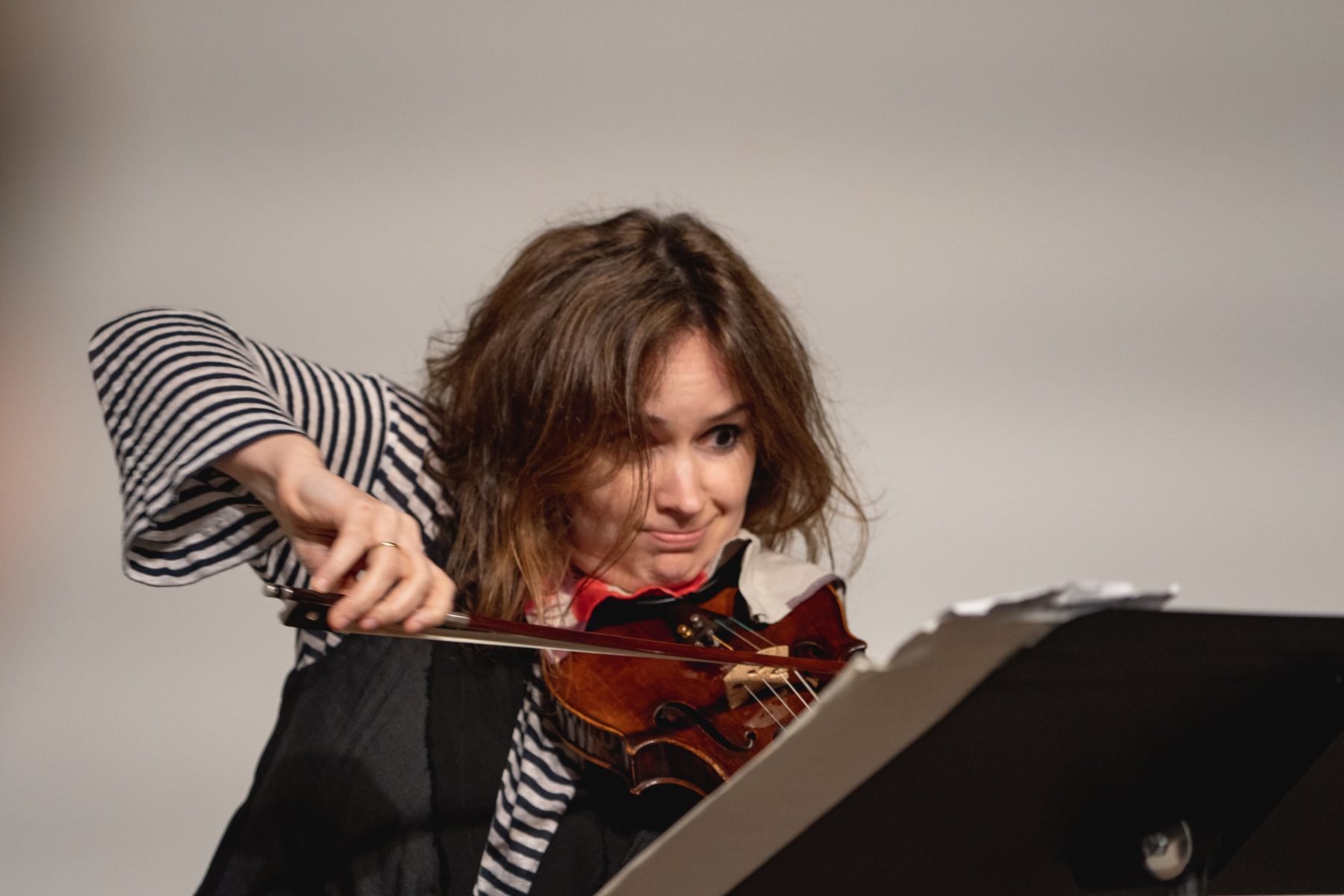
72nd Ojai Music Festival: June 7-10, 2018
Patricia Kopatchinskaja, Music Director
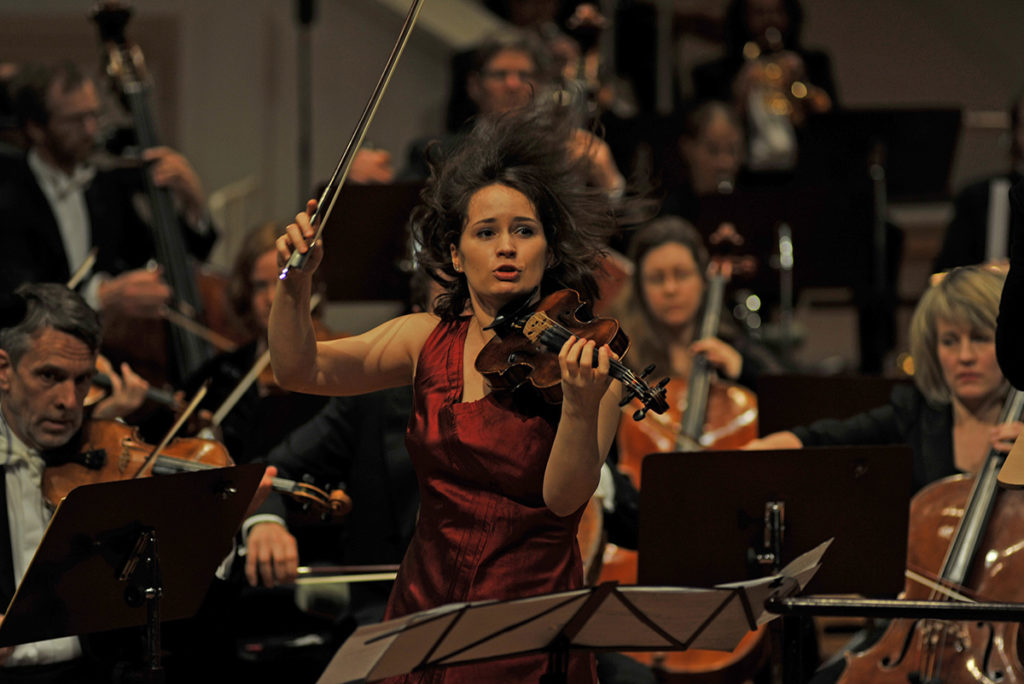
Download PDF Version of Release
The 2018 Festival presents many dimensions of Kopatchinskaja:
· Violinist in works by Luigi Nono, Beethoven, Tigran Mansurian, and Ligeti
· Collaborator with soprano Ah Young Hong in Kurtag’s Kafka Fragments, Ravel’s Sonata for Violin and Cello with JACK Quartet cellist Jay Campbell, and with her parents in an exploration of Moldavan folk music
· Advocate for music by Michael Hersch and Galina Ustvolskaya
Highlights of the 2018 Festival:
· Two semi-staged concerts conceived and directed by Kopatchinskaja
· The world premiere of a commissioned work by Michael Hersch
· Stravinsky’s L’Histoire du Soldat on the occasion of its centennial
· Free music events including Luciano Berio’s Sequenzas for solo instruments, two concerts for children devised and performed by Kopatchinskaja, and John Luther Adams’ new string quartet “everything that rises” as a tribute to Ojai Valley renewal following the Thomas Fire
Joining Patricia Kopatchinskaja are close artistic collaborators, all of whom are making their Festival debuts: Berlin-based Mahler Chamber Orchestra in its first extended United States residency, JACK Quartet, composer/pianist Michael Hersch, pianist Markus Hinterhäuser, pianist/harpsichordist Anthony Romaniuk, pianist Amy Yang, and Kopatchinskaja’s parents, Viktor and Emilia Kopatchinsky
The new partnership with Great Britain’s Aldeburgh Festival launches June 20-23, 2018
Cal Performances’ Ojai at Berkeley is June 15-17, 2018
“Ojai is special. There is no fight with new music. There is no fear. Just curiosity and hunger for fresh music of today. The Ojai audiences are completely open minded, and it’s a wonderful possibility to do music that I truly enjoy and find powerfully relevant in our present world. Ojai is magic,” Patricia Kopatchinskaja, 2018 Music Director.
(OJAI CA – UPDATE May 24, 2018) – The 72nd Ojai Music Festival, June 7-10, 2018, presents Music Director Patricia Kopatchinskaja’s unbounded musical creativity in the context of today’s social and political climate. The Ojai, Ventura, and Santa Barbara areas continue to replenish from the devastation of the Thomas Fire. The Topa Topa Mountains surrounding the Ojai Valley have already given rise to new growth, and the Festival honors this renewal with new works, debuts, and free community concerts.
“When I first met Patricia Kopatchinskaja, I knew she was a natural to be Music Director of the Festival. She is, quite simply, a force of nature. Her unstoppable energy, blazing virtuosity, and relentless curiosity are irresistible. The 2018 Festival will showcase her wildly diverse artistic tal-ents as a violinist, a collaborator, a director, an advocate, and as a creative force. Patricia sees music in the context of today’s social and political issues, so the 2018 Festival is one that will surely offer confrontation, questioning, and healing. The 2018 Festival aims to capture Patricia’s infectious energy and virtuosity,” said Artistic Director Thomas W. Morris.
The 2018 Ojai Music Festival welcomes the Mahler Chamber Orchestra (MCO) in its first extended United States residency. Founded in 1997, the Berlin-based MCO defines itself as a free and international ensemble, dedicated to creating and sharing exceptional experiences in classical music. With members spanning 20 different countries, the MCO works as a nomadic collec-tive of passionate musicians uniting for specific projects in Europe and across the world. The MCO forms the basis of the Lucerne Festival Orchestra and maintains long and fruitful artistic relationships with major artists, including Ms. Kopatchinskaja and Mitsuko Uchida, Ojai’s 2021 Music Director. In Ojai, MCO will display its versatility and virtuosity as an orchestral ensemble, in smaller chamber iterations, and also in superb solo performances from individual members.
The JACK Quartet also makes its Ojai debut at the 2018 Festival. Deemed “superheroes of the new music world” (Boston Globe), JACK is dedicated to the performance, commissioning, and spread of new string quartet music. Comprising violinists Christopher Otto and Austin Wulliman, violist John Pickford Richards, and cellist Jay Campbell, the group collaborates with composers of our day, including John Luther Adams, Chaya Czernowin, Simon Steen-Andersen, Caroline Shaw, Helmut Lachenmann, Steve Reich, Matthias Pintscher, and John Zorn. At the 2018 Festival, JACK will perform works by Georg Frederick Haas, Horatio Radulescu, Morton Feldman, George Crumb, and John Luther Adams.
Major projects will include two semi-staged concerts conceived and directed by Ms. Kopatchinskaja. The first, which opens the Festival on Thursday night, is Bye Bye Beethoven. Ms. Kopatchinskaja describes the concert as a commentary on “the irrelevance of the classic concert routine for our present life.” This program features a mash-up of music by Charles Ives, John Cage, Joseph Haydn, György Kurtág, Johann Sebastian Bach, and the Beethoven Violin Concerto. This marks the US premiere of Bye Bye Beethoven, which was premiered at the Hamburg International Music Festival and subsequently staged in Berlin. This production marked the fourth collaboration between Ms. Kopatchinskaja and the Mahler Chamber Orchestra. Bye Bye Beethoven involves musicians in both conventional and unconventional roles, encounters with different musical genres and discourse among sound, space and imagery.
The second semi-staged concert conceived and directed by Ms. Kopatchinskaja is a provocative commentary on the consequences of global warming. Titled Dies Irae, the program is an aesthetic reflection of a time rife with global warming, wars over resources, and refugee crises. Musical selections include Heinrich Ignaz Franz Biber, George Crumb, Michael Hersch, Byzantine chant, and Galina Ustvolskaya’s remarkable Dies irae for eight double basses, piano, and wooden box. The evening performance on Saturday, June 9 marks its American premiere.
A new work, I hope we get a chance to visit soon by American composer Michael Hersch – described by him as a dramatic narrative for two sopranos and eight instrumentalists – will receive its world premiere at the 2018 Ojai Music Festival, with subsequent performances at Cal Performances’ Ojai at Berkeley and at Great Britain’s venerable Aldeburgh Festival. Performing in the premiere will be sopranos Ah Young Hong and Kiera Duffy, alto saxophone player Gary Lou-ie, and members of the Mahler Chamber Orchestra conducted by Tito Munoz. Set to poetry and text by Rebecca Elson, Mary Harris O’Reilly, and Christopher Middleton, the new work is com-missioned by the Ojai Music Festival, Cal Performances Berkeley, Aldeburgh Festival, and PN Review. Mr. Hersch, who wrote a violin concerto for Ms. Kopatchinskaja two years ago, is con-sidered one of the most gifted composers of his generation. He currently serves on the composi-tion faculty at the Peabody Institute of the Johns Hopkins University. The Friday, June 8 premiere follows works by Carl Philip Emmanuel Bach, and music by Purcell, Bartok, Shostakovich, and George Crumb performed by Anthony Romaniuk, Patricia Kopatchinskaja, and JACK Quartet.
Featured on Friday afternoon (June 8) will be the music of Russian composer Galina Ustvolskaya, described by Alex Ross as “one of the century’s grand originals.” Kopatchinskaja has long been a passionate advocate of Ustvolskaya’s music and will perform her Duet and So-nata with pianist Markus Hinterhäuser. Hinterhäuser, who is also the Intendant of the Salzburg Festival, will perform all six of her piano sonatas. Ustvolskaya’s powerful Dies irae will be featured in the Saturday evening concert of the same title.
Additional programming highlights include Kurtag’s Kafka Fragments; Stravinsky’s L’Histoire du Soldat on the occasion of its centennial; major chamber and piano music by Galina Ustvolskaya; as well as Romanian and Moldavan folk music performed by Ms. Kopatchinskaja and her parents, Viktor and Emilia Kopatchinsky on cimbalom and violin. The Festival closes with the Ligeti Violin Concerto performed by Patricia Kopatchinskaja.
Free Community Concerts
The 2018 Festival continues to build on its commitment to reach broader audiences with several opportunities for all to experience Ojai offerings. On Thursday June 7, following the three-part Ojai Talks dialogues, the Festival commences the first in a series of five free concerts in the Gazebo of Libbey Park, featuring performances of Luciano Berio’s Sequenzas for solo instruments performed by members of the Mahler Chamber Orchestra. On Saturday morning (June 9), Viktor Koptachinsky will perform in works for cimbalon at the Gazebo hosted by his daughter Patricia and Artistic Director Thomas W. Morris. Ms. Kopatchinskaja and Scott Worthington, electronics (who replaces Jorge Chiong-Sanchez), will perform Luigi Nono’s La lontanaza nostalgica utopia futura in a free concert on Thursday evening in Libbey Park, preceding the Festival’s first main Libbey Bowl concert of Ms. Kopatchinskaja’s semi-staged concert Bye Bye Beethoven.
New to the schedule is on Friday evening (June 8), the JACK Quartet will perform John Luther Adams’ Everything that Rises, a work commissioned by the quartet, in a free community concert in tribute to the Ojai Valley renewal following December’s devastating wild fires. Additionally, Ms. Kopatchinskaja has programmed two free concerts just for children. Children of all ages will convene in the Ojai Art Center listen to works by Berio, Biber, Cage, Holliger, Arthur Honegger, and Ferdinand the Bull by Alan Ridout for solo violin and speaker. These concerts for children are presented in association with the Festival’s BRAVO education program for schools and community.
Ojai Talks
The 2018 Festival begins with Ojai Talks hosted by Ara Guzelimian, former Festival Artistic Director and current Dean and Provost of The Julliard School. On Thursday, June 7, a three-part series of discussions will begin with an exploration of Patricia Kopatchinskaja’s musical preferences and inspirations, followed by a discussion with composer Michael Hersch and soprano Ah Young Hong. The third part of the series will speak to the reinvention of musical groups with the JACK Quartet. Additional on-site and on-line dialogue during the 2018 Festival includes Concert Insights, the preconcert talks at the LIbbey Bowl Tennis Courts with Festival artists hosted by resident musicologist Christoper Hailey, and live stream interviews between concerts.
For up-to-date Festival information, artist biographies and photos, and access to concerts, etc., visit the Ojai Music Festival website at OjaiFestival.org.
New Partnership with the Aldeburgh Festival
Following the 2018 Festival in Ojai with Music Director Patricia Kopatchinskaja and the following week’s Ojai at Berkeley presented in collaboration with Cal Performances, a new partnership with Aldeburgh will take place at the end of the Aldeburgh Festival (June 20 – 23) based at the acclaimed Maltings Concert Hall and in the town of Snape near Aldeburgh in England. The col-laboration with Aldeburgh follows the formation of Ojai at Berkeley as a partnership of co-productions and co-commissions that affords the Ojai Music Festival, the Aldeburgh Festival, and Cal Performances the ability to present more complex and creative artistic projects than could be conceived by each partner separately. The Aldeburgh relationship launches in June 2018, for an initial four-year period.
Ojai at Berkeley
Marking the eighth year of artistic partnership, Ojai at Berkeley celebrates the dynamic nature of the Ojai Music Festival and of Cal Performances. As two distinct communities, Ojai and Berke-ley are both known for intrepid artistic discovery, spirited intellect, and enduring engagement in the arts. Inaugurated in 2011, Ojai at Berkeley is a joint force that enables co-commissions and co-productions and allows artists to achieve more than could be imagined by each organization separately. Ojai at Berkeley will take place from June 15-17 in Berkeley, CA, following the Ojai Music Festival. For more information, visit CalPerformances.org.
Patricia Kopatchinskaja, 2018 Music Director
Ms. Kopatchinskaja’s (Ko pat chin sky yah) 2017/18 season commenced with the world premi-ere of her new project Dies Irae at the Lucerne Festival where she was ‘artiste étoile’. The second staged program which follows the success of Bye Bye Beethoven with Mahler Chamber Orchestra in 2016, is conceptualized using a theme from the Latin Requiem Mass and features music from composers such as Scelsi, Biber and Ustwolskaja. The North American premiere will take place at the Ojai Festival in June 2018 where she is Music Director.
Ms. Kopatchinskaja’s was awarded the prestigious Swiss Grand Award for Music in September 2017 and continues to move from strength to strength adding a Grammy award to her list of ac-colades in the 17/18 Season. The Violinist was presented with the award for Best Chamber Mu-sic/Small Ensemble Performance for her disc Death and the Maiden, recorded with the St Paul Chamber Orchestra and released on Alpha Classics.
Concert highlights in 17/18 include; performances of Stravinsky’s concerto with Currentzis and the Tonhalle-Orchester Zürich and the same repertoire with Gimeno and the Rotterdam Phil-harmonic Orchestra. She has played with Mahler Chamber Orchestra under Payare and will perform with Orchestra Sinfonica Nazionale della RAI and Geneva Camerata for Berg’s violin concerto.
Chamber music is immensely important to Ms. Kopatchinskaja and she performs regularly with artists such as Markus Hinterhäuser, Anthony Romaniuk and Jay Campbell. With pianist, Polina Leschenko she has recorded and released ‘Deux’ for Alpha Classics. Together the duo reimagi-nes the sonatas of Ravel, Poulenc, Bartok and Dohnányi.
Thomas W. Morris, Artistic Director
Thomas W. Morris was appointed Artistic Director of the Ojai Music Festival starting with the 2004 Festival. As Artistic Director, he is responsible for artistic planning and each year appoints a music director with whom shapes the Festival’s programming. During Mr. Morris’ tenure, audi-ences have increased, the scope and density of the Festival has expanded, the collaborative partnership Ojai at Berkeley with Cal Performances at UC Berkeley has started, a new partner-ship with England’s Aldeburgh Festival will be initiated this year, and a comprehensive program of video streaming of all concerts has been instituted. Mr. Morris is recognized as one of the most innovative leaders in the orchestra industry and served as the long-time chief executive of both The Cleveland Orchestra and the Boston Symphony Orchestra. He is currently active na-tionally and internationally as a consultant, lecturer, teacher, and writer. Mr. Morris was a found-ing director of Spring for Music and served as the project’s artistic director. He is currently vice chair of the Board of Directors of the Interlochen Center for the Arts, and he is also an accom-plished percussionist. In November, Mr. Morris announced his decision to retire as the Festival’s Artistic Director following the 2019 Festival with Music Director Barbara Hannigan, after shaping Ojai’s artistic direction for sixteen years.
About the Ojai Music Festival
From its founding in 1947, the Ojai Music Festival has created a place for groundbreaking musi-cal experiences, bringing together innovative artists and curious audiences in an intimate, idyllic setting 80 miles northwest of Los Angeles. The Festival presents broad-ranging programs in unu-sual ways with an eclectic mix of rarely performed music, refreshing juxtapositions of musical styles, and works by today’s composers. The four-day festival is an immersive experience with concerts, free community events, symposia, and gatherings. Considered a highlight of the inter-national music summer season, Ojai has remained a leader in the classical music landscape for seven decades.
Through its unique structure of the Artistic Director appointing an annual Music Director, Ojai has presented a “who’s who” of music including Aaron Copland, Igor Stravinsky, Olivier Messiaen, Michael Tilson Thomas, Kent Nagano, Pierre Boulez, John Adams, Esa-Pekka Salonen, Robert Spano, Pierre-Laurent Aimard, David Robertson, Eighth Blackbird, George Benjamin, Dawn Upshaw, Leif Ove Andsnes, Mark Morris, Jeremy Denk, Steven Schick, Peter Sellars, and Vijay Iyer. Following Patricia Kopatchinskaja, Ojai will welcome Music Director Barbara Hannigan (2019), Matthias Pintscher (2020) and Mitsuko Uchida (2021).
As the Ojai Music Festival approaches its 75th anniversary and looks toward the future with re-cently appointed Artistic Director Chad Smith, who will take the helm in 2020, the innumerable contributions by Thomas W. Morris will continue to be realized through the 2019 Festival and be-yond. Under Mr. Morris’ creative watch, the Festival continues to push boundaries and scope; explore each music director’s individual perspective, creativity, and artistic communities; invite an ever-broadening roster of artists; and build connections across musical communities with through-curated programming for each Festival.
Remote Access to the Ojai Music Festival
The Ojai Music Festival continues to draw thousands of curious and engaged music enthusiasts from across the country. As tickets remain in high demand, Ojai includes free access to the Fes-tival experience through live and archived video streaming at OjaiFestival.org. The live streaming includes guest interviews throughout the web cast. Hosting this year will be director of publications at National Sawdust and longtime journalist Steve Smith and LA-based composer/musician and host of Underscore.FM podcast Thomas Kotcheff.
Tickets for the 2018 Ojai Music Festival
2018 Festival single tickets are available and may be purchased online at OjaiFestival.org or by calling (805) 646-2053. 2018 Ojai Music Festival single tickets range from $45 to $150 for re-served seating and lawn tickets for $20.
OJAI MUSIC FESTIVAL SCHEDULE
June 7-10, 2018
2018 Ojai Garden & Music Package
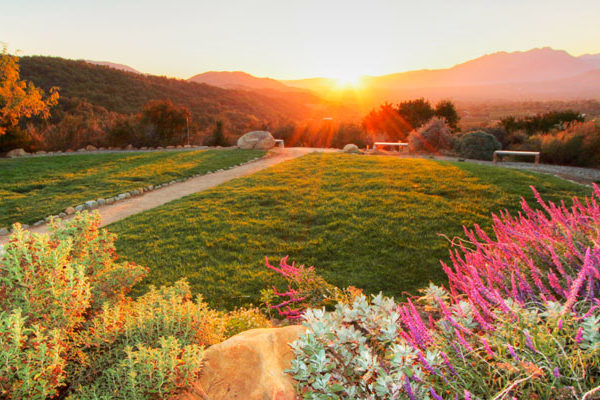
EXPERIENCE BEAUTIFUL OJAI
A private two-day package for garden lovers
FRIDAY, JUNE 8 to SUNDAY, JUNE 10
- Stay at the Ojai Valley Inn and Spa in a well-appointed fireplace room
- Attend exceptional concerts of the Ojai Music Festival in the outdoor Libbey Bowl
- Visits to some of Ojai’s finest private gardens including a personal tour of Peter Strauss’ Moroccan Garden, a Pamela Burton designed landscape in Upper Ojai, Paul Hendershot’s own house and garden, and the Turtle Conservancy and Gardens
- Lunch under the oak trees on an historic estate, al fresco dinner in Libbey Park, and Sunday brunch in upper Ojai
One weekend
One price*
One amazing experience
Package includes:
two nights at hotel, shuttle during your stay in Ojai, tickets for four concerts, VIP access to Festival lounge and additional surprises
There is limited space for this exclusive package.
Please respond as soon as possible to ensure your place.
Contact Gina Gutierrez at 805 646 2181 or email [email protected]
*$1,630 per person (double occupancy) | For single occupancy, add $630
A Perfect Ojai Music Adventure: June 7-10, 2018

“The Ojai Music Festival has been raising a finely calibrated ruckus each spring since 1947.”– Alex Ross, The New Yorker
The Ojai Music Festival’s unparalleled legacy brings fearless musical innovators to share fresh and compelling sounds, ideas, and collaborations with an inquisitive audience open to new adventures. Unlike other festivals, Ojai creates a curated narrative thread over four concentrated days of surprise and wonder, giving audiences and artists an immersive artistic, intellectual, and stimulating experience.
Praised for her “savage energy” (The Washington Post) and “mesmerizing artistry” (The Strad), the Moldovan-Austrian violinist Patricia Kopatchinskaja journeys to Ojai as the 2018 Music Director and shares her boundless passion for the old, the new, and the challenging. A path-breaking collaborator with timely insights on the state of our world, Patricia will provoke important conversations that venture beyond the music.
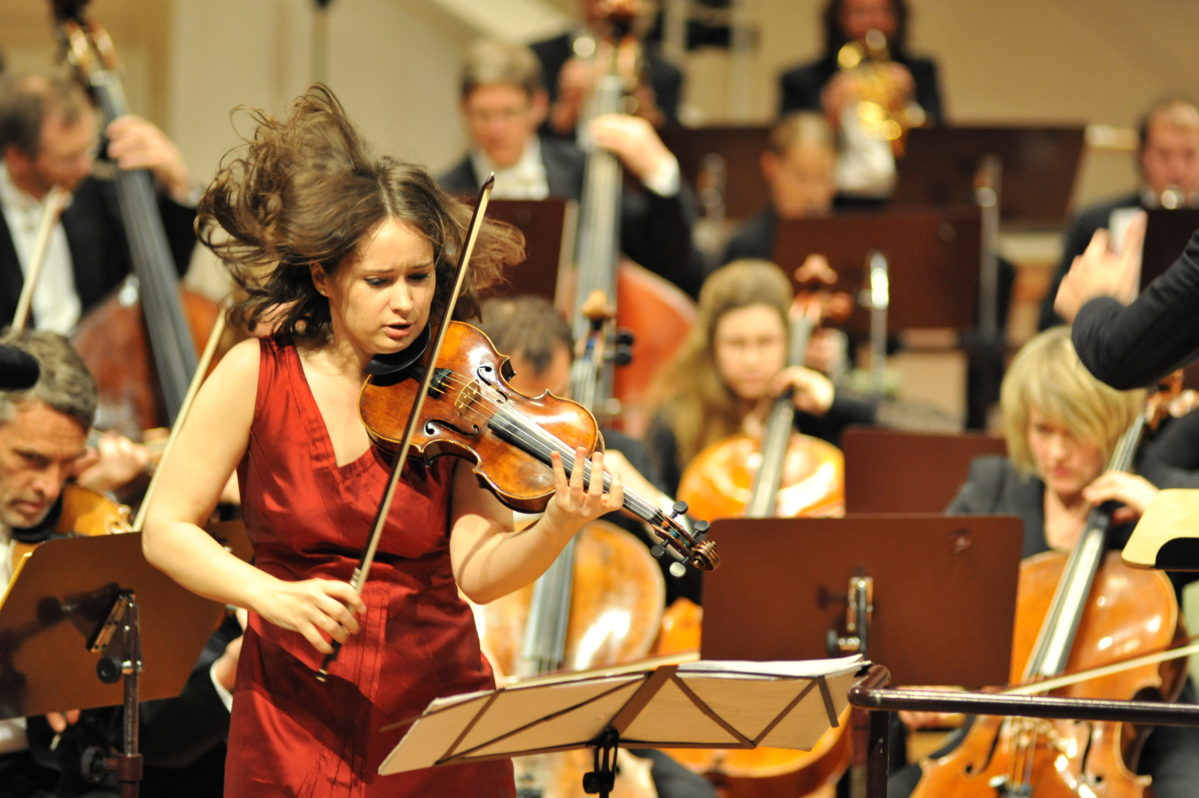
2018 Highlights:
- Two semi-staged concerts conceived and directed by Kopatchinskaja
- The world premiere of a commissioned work by Michael Hersch
- Stravinsky’s L’Histoire du Soldat on the occasion of its centennial
- Free music events including Luciano Berio’s Sequenzas for solo instruments and two concerts for children devised and performed by Kopatchinskaja
- Collaborations with soprano Ah Young Hong in Kurtag’s Kafka Fragments, Ravel’s Sonata for Violin and Cello with JACK Quartet cellist Jay Campbell, and with her parents in an exploration of Moldavian folk music.
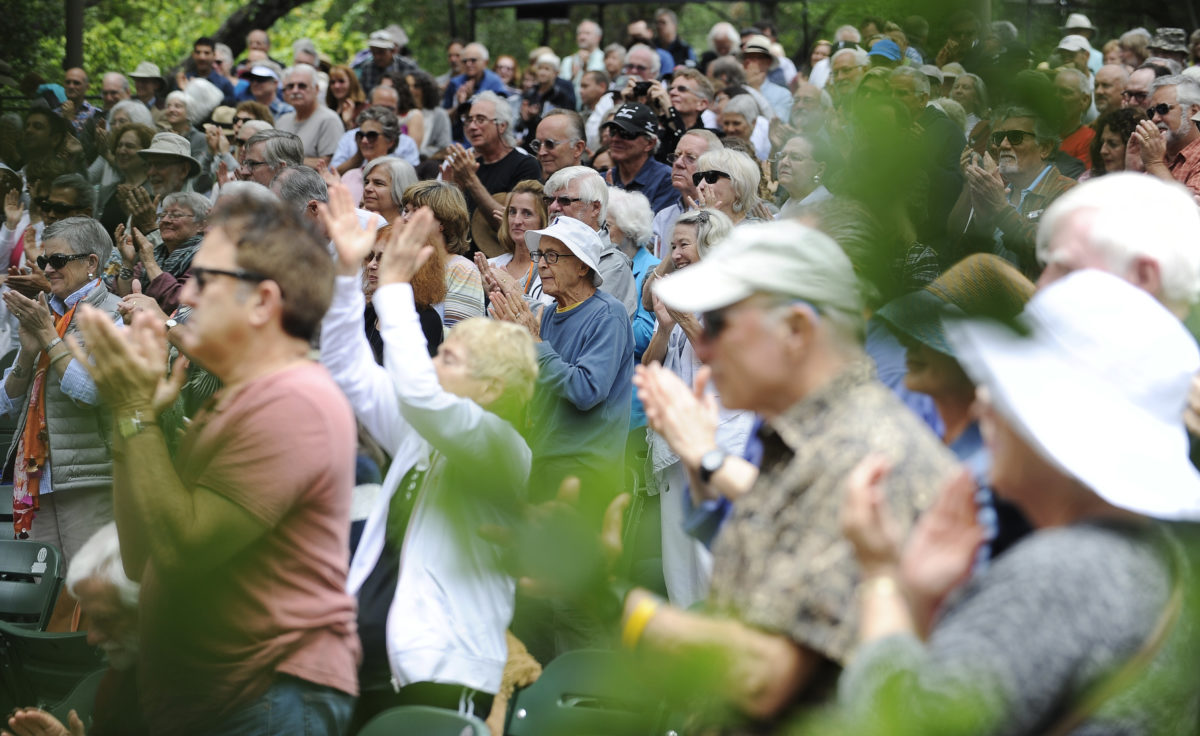 The Benefits of Ordering Series Passes:
The Benefits of Ordering Series Passes:
In addition to getting the best value and the best seats for every concert, you connect with the musical journey, with the artists, and with other music enthusiasts, all in the intimate setting of Ojai for a super-charged immersive experience. - A planned musical journey across four days
- Priority seating for the best seats in Libbey Bowl
- Special seating area at the Children’s Concert
- Flexible seat exchange policy
- Best savings over single ticket prices
- Access to private events throughout the year
Enjoy a series immersion pass : 4-day, 3-day, or weekend passes available. Use promo code Ojailove2018 and receive an additional discount, now until March 11, 2018. Call our box office at 805 646 2053 or purchase online here>
Matthias Pintscher, 2020 Music Director
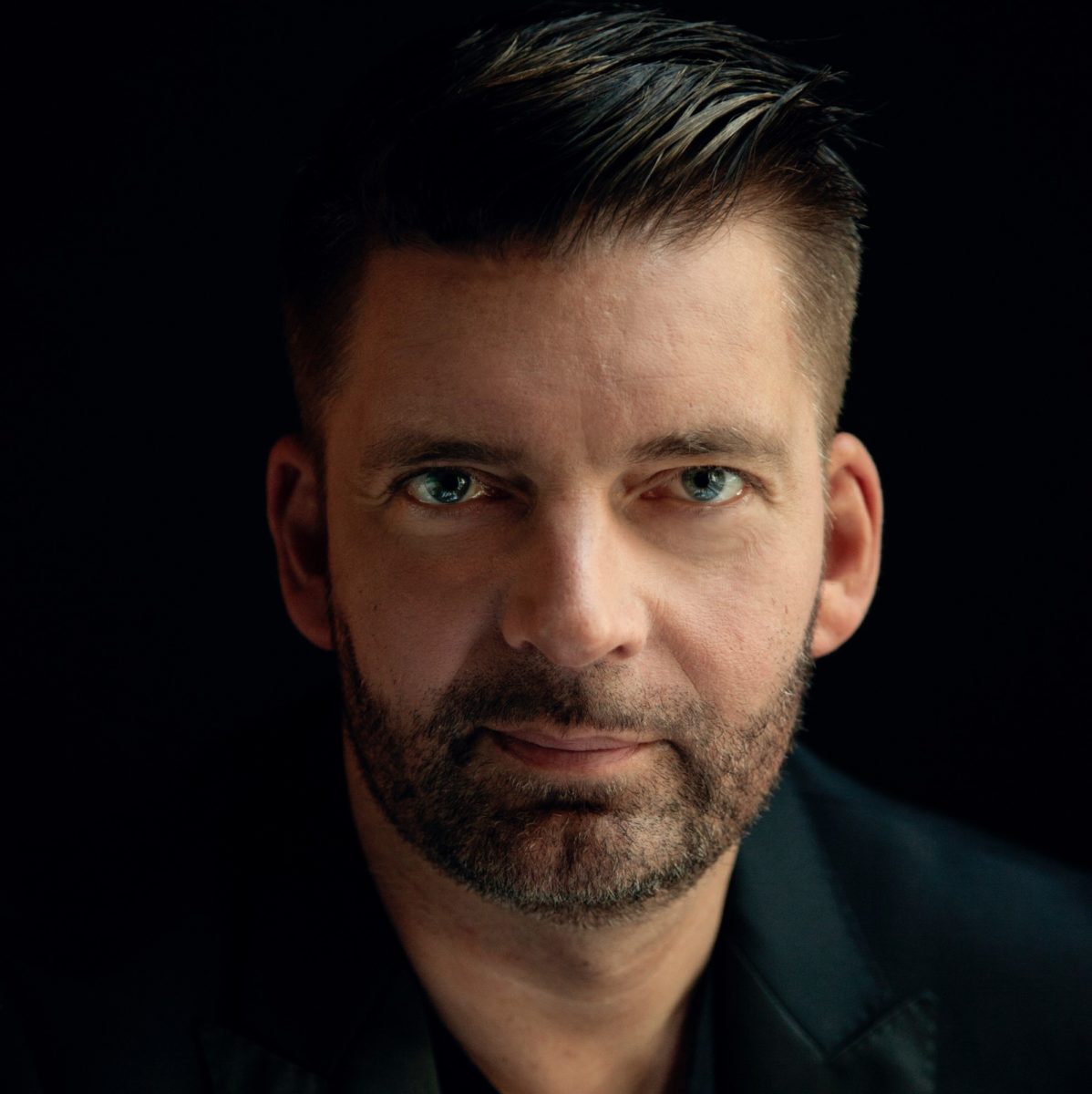
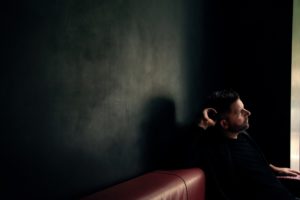 Matthias Pintscher is Music Director of the Ensemble Intercontemporain and Principal Conductor of the Lucerne Festival Academy Orchestra. He is currently in his seventh year as Artist in Association with the BBC Scottish Symphony and was the inaugural Artist in Residence and featured artist at the new Elbphilharmonie concert hall in Hamburg.
Matthias Pintscher is Music Director of the Ensemble Intercontemporain and Principal Conductor of the Lucerne Festival Academy Orchestra. He is currently in his seventh year as Artist in Association with the BBC Scottish Symphony and was the inaugural Artist in Residence and featured artist at the new Elbphilharmonie concert hall in Hamburg.
Matthias began his musical training in conducting with Hungarian Composer and Conductor Peter Eötvös during his early twenties, during which time composing took a more prominent role in his life. Soon after, he divided his time equally between conducting and composing studying with teacher and mentor Pierre Boulez, soon rising to critical acclaim and more recently is conducting as a major role.
Conducting highlights of the 16/17 season included projects with the Berliner Philharmoniker, Los Angeles Philharmonic, Cleveland Orchestra, Dallas Symphony, Cincinnati Symphony, Symphonieorchester des Bayerischen Rundfunks, Mariinsky Orchestra, Deutsches Sinfonieorchester Berlin, Radio Symphonie Orchester Wien and Deutsche Kammerphilharmonie Bremen as well as an extensive tour of Asia with the Ensemble Intercontemporain in celebration of their 40th anniversary. In addition, Matthias has also appeared as guest conductor with the NDR Hamburg, Danish Radio Symphony, Sydney, Melbourne Symphony, New York Philharmonic, Chicago Symphony, DSO Berlin, Mahler Chamber and Helsinki Philharmonic Orchestras.
Matthias is a prolific composer whose works are performed by leading orchestras and artists worldwide. The debut of his Cello Concerto Un Despertar was premiered last season by Alisa Weilerstein and the Boston Symphony Orchestra, and in April 2017 the World Premiere of Shirim for Baritone and Orchestra with Danish singer Bo Skovhus and the NDR Elbphilharmonie Orchester in Hamburg. Matthias is also professor at The Julliard School since 2014 and is published by Bärenreiter-Verlag.
During the 17/18 season, Matthias will return to the Los Angeles Philharmonic and BBC Scottish Symphony Orchestras, as well as projects with the Utah Symphony Orchestra, Gulbenkian Orchestra, Finnish Radio Symphony Orchestra, Mahler Chamber Orchestra (Beethoven 9), the Saint Paul Chamber Orchestra and Orchestra de la Suisse Romande as well as debuts with the Royal Concertgebouw Orchestra and the London Symphony Orchestra.
For further information on this artist, please contact:
EDWARD PASCALL, Senior Artist Manager
[email protected] | +44 (0)20 7400 1725
OLLIE HAINES, Assistant Artist Manager
[email protected] | +44 (0)20 7400 1749
Askonas Holt Limited
Lincoln House, 300 High Holborn, London WC1V 7JH, United Kingdom
T +44 (0)20 7400 1700 askonasholt.co.uk [email protected]
Patricia Discusses the 2018 Festival
2018 Music Director Patricia Kopatchinskaja details the upcoming Festival – she put careful thought and feeling into her planning. In this video, you can see her passion and contagious enthusiasm.
You can purchase your series passes by following this link, or by calling 805-646-2053.
2018 Video
Welcome to our library of videos relating to 2018 Festival artists! Learn more about what to expect in June.
2018 Festival Line-Up is Announced
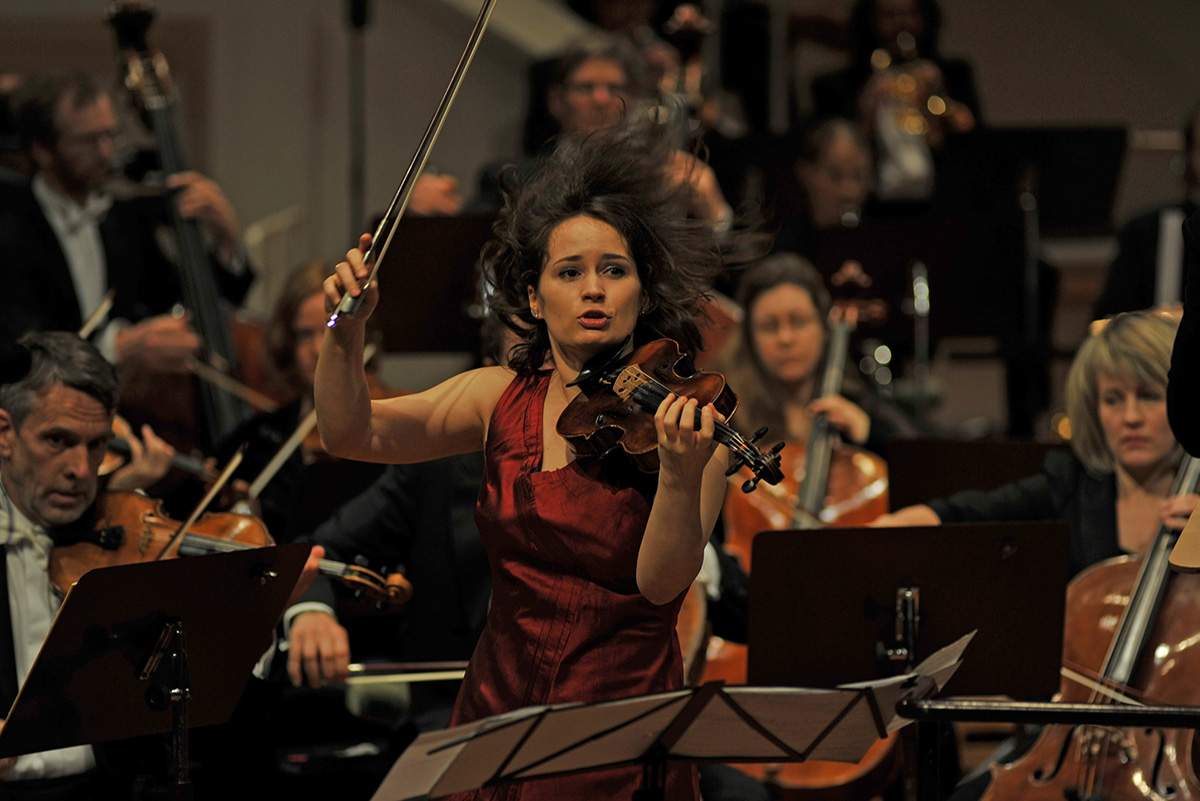
“Ojai is special. There is no fight with new music, no fear — just curiosity and hunger for fresh music of today. The Ojai audiences are completely open minded, and it’s a wonderful possibility to do music that I truly enjoy and find powerfully relevant in our present world. Ojai is magic,” Patricia Kopatchinskaja, 2018 Music Director.
“When I first met Patricia Kopatchinskaja, I knew she was a natural to be Music Director of the Festival. She is, quite simply, a force of nature. Her unstoppable energy, blazing virtuosity, and relentless curiosity are irresistible. The 2018 Festival will showcase her wildly diverse artistic talents as a violinist, a collaborator, a director, an advocate, and as a creative force. Patricia sees music in the context of today’s social and political issues so the 2018 Festival is one that will surely offer confrontation, questioning, and healing. The 2018 Festival aims to capture Patricia’s infectious energy and virtuosity,” Thomas W. Morris, Artistic Director.
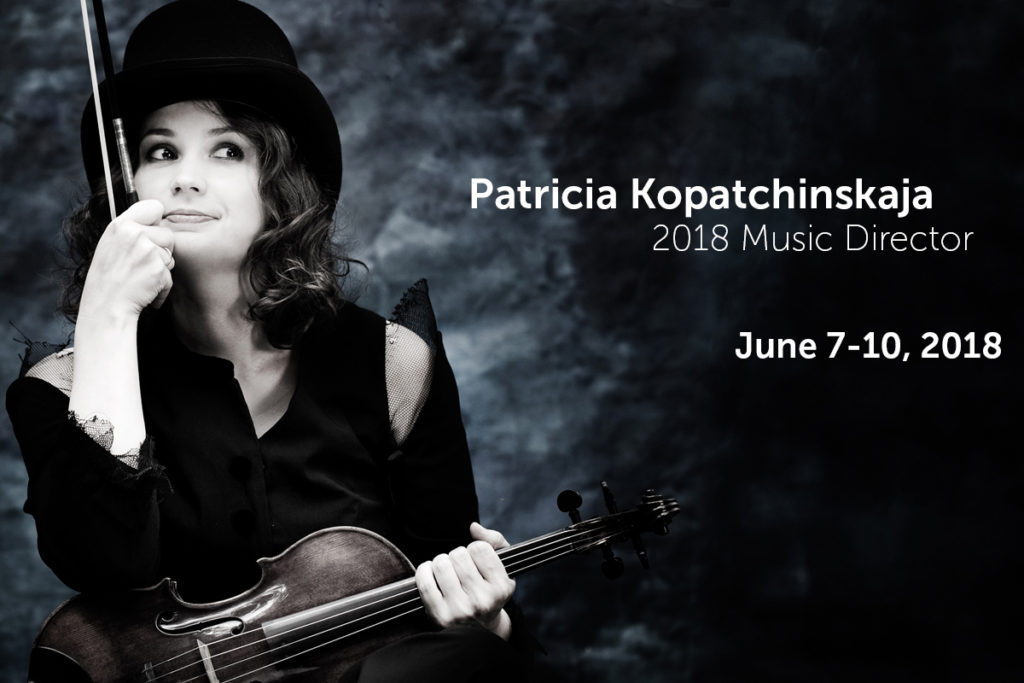
The 72nd Ojai Music Festival, June 7-10, 2018, presents Music Director Patricia Kopatchinskaja’s unbounded musical creativity and perspective in the context of today’s social and political climate.
The 2018 Ojai Music Festival welcomes the Mahler Chamber Orchestra (MCO) in its first extended United States residency. Founded in 1997, the Berlin-based MCO defines itself as a free and international ensemble, dedicated to creating and sharing exceptional experiences in classical music. With members spanning 20 different countries, the MCO works as a nomadic collective of passionate musicians uniting for specific projects in Europe and across the world. The MCO forms the basis of the Lucerne Festival Orchestra and maintains long and fruitful artistic relationships with major artists, including Ms. Kopatchinskaja and Mitsuko Uchida, Ojai’s 2021 Music Director. In Ojai, MCO will display its versatility and virtuosity as an orchestral ensemble, in smaller chamber iterations, and also in superb solo performances from individual members.
 The JACK Quartet also makes its Ojai debut at the 2018 Festival. Deemed “superheroes of the new music world” (Boston Globe), JACK is dedicated to the performance, commissioning, and spread of new string quartet music. Comprising violinists Christopher Otto and Austin Wulliman, violist John Pickford Richards, and cellist Jay Campbell, the group collaborates with composers of our day, including John Luther Adams, Chaya Czernowin, Simon Steen-Andersen, Caroline Shaw, Helmut Lachenmann, Steve Reich, Matthias Pintscher, and John Zorn. Upcoming and recent premieres include works by Derek Bermel, Cenk Ergün, Roger Reynolds, Toby Twining, and Georg Friedrich Haas. At the 2018 Festival, JACK will perform works by Georg Frederick Haas, Horatio Radulescu, Morton Feldman, George Crumb and Jorge Sanchez-Chiong.
The JACK Quartet also makes its Ojai debut at the 2018 Festival. Deemed “superheroes of the new music world” (Boston Globe), JACK is dedicated to the performance, commissioning, and spread of new string quartet music. Comprising violinists Christopher Otto and Austin Wulliman, violist John Pickford Richards, and cellist Jay Campbell, the group collaborates with composers of our day, including John Luther Adams, Chaya Czernowin, Simon Steen-Andersen, Caroline Shaw, Helmut Lachenmann, Steve Reich, Matthias Pintscher, and John Zorn. Upcoming and recent premieres include works by Derek Bermel, Cenk Ergün, Roger Reynolds, Toby Twining, and Georg Friedrich Haas. At the 2018 Festival, JACK will perform works by Georg Frederick Haas, Horatio Radulescu, Morton Feldman, George Crumb and Jorge Sanchez-Chiong.
Major projects will include two semi-staged concerts conceived and directed by Ms. Kopatchinskaja. The first, which opens the Festival on Thursday night, is Bye Bye Beethoven. Kopatchinskaja describes the concert as a commentary on “the irrelevance of the classic concert routine for our present life.” This program features a mash-up of music by Charles Ives, John Cage, Joseph Haydn, György Kurtág, Johann Sebastian Bach, and the Beethoven Violin Concerto. This marks the US premiere of Bye Bye Beethoven, which was premiered at the Hamburg International Music Festival and subsequently staged in Berlin. This production marked the fourth collaboration between Ms. Kopatchinskaja and the Mahler Chamber Orchestra. Bye Bye Beethoven involves musicians in both conventional and unconventional roles, encounters with different musical genres – including a collaboration with sound designer Jorge Sanchez-Chiong – and discourse among sound, space and imagery.
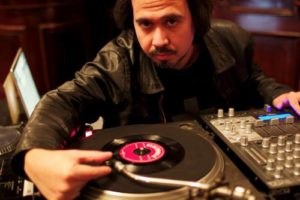 The second semi-staged concert conceived and directed by Ms. Kopatchinskaja is her own provocative commentary on the consequences of global warming. Titled Dies Irae, the program is an aesthetic reflection of a time rife with global warming, wars over resources, and refugee crises. Musical selections include Heinrich Ignaz Franz Biber, George Crumb, Michael Hersch, Byzantine chant, Giacinto Scelsi, and Galina Ustvolskaya’s remarkable Dies Irae for eight double basses, piano, and wooden box. The evening performance on Saturday, June 9, 2018 marks its American premiere.
The second semi-staged concert conceived and directed by Ms. Kopatchinskaja is her own provocative commentary on the consequences of global warming. Titled Dies Irae, the program is an aesthetic reflection of a time rife with global warming, wars over resources, and refugee crises. Musical selections include Heinrich Ignaz Franz Biber, George Crumb, Michael Hersch, Byzantine chant, Giacinto Scelsi, and Galina Ustvolskaya’s remarkable Dies Irae for eight double basses, piano, and wooden box. The evening performance on Saturday, June 9, 2018 marks its American premiere.
A new piece by American composer Michael Hersch – described by him as a dramatic cantata for two sopranos and eight instrumentalists – will receive its world premiere at the 2018 Ojai Music Festival, with subsequent performances at Cal Performances’ Ojai at Berkeley and at Great Britain’s venerable Aldeburgh Festival. The Friday, June 8, 2018 premiere follows works by Carl Philip Emmanuel Bach, Jorge Sanchez-Chiong, and piano music by Bull, Byrd, Purcell as well as improvisations. Mr. Hersch, who wrote a violin concerto for Ms. Kopatchinskaja two years ago, is considered one of the most gifted composers of his generation and is a formidable pianist. He currently serves on the composition faculty at the Peabody Institute of the Johns Hopkins University.
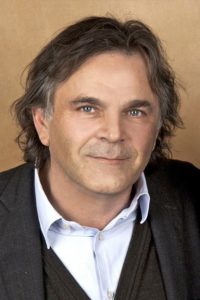 Featured on Friday afternoon (June 8) will be the music of Russian composer Galina Ustvolskaya, described by Alex Ross as “one of the century’s grand originals.” Kopatchinskaja has long been a passionate advocate of Ustvolskaya’s music and will perform with pianist Markus Hinterhäuser her Duet and Sonata. Hinterhäuser, who is also the Intendant of the Salzburg Festival, will perform all six of her piano sonatas. Ustvolskaya’s powerful Dies irae will be featured in the Saturday evening concert of the same title.
Featured on Friday afternoon (June 8) will be the music of Russian composer Galina Ustvolskaya, described by Alex Ross as “one of the century’s grand originals.” Kopatchinskaja has long been a passionate advocate of Ustvolskaya’s music and will perform with pianist Markus Hinterhäuser her Duet and Sonata. Hinterhäuser, who is also the Intendant of the Salzburg Festival, will perform all six of her piano sonatas. Ustvolskaya’s powerful Dies irae will be featured in the Saturday evening concert of the same title.
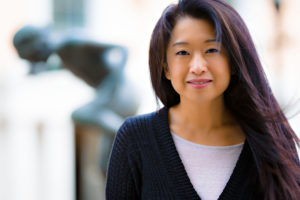 Additional programming highlights include Kurtag’s Kafka Fragments; Stravinsky’s L’Histoire du Soldat on the occasion of its centennial; major chamber and piano music by Galina Ustvolskaya; as well as Roumanian and Moldavian folk music performed by Ms. Kopatchinskaja and her parents, Viktor and Emilia Kopatchinski on cimbalom and violin. The Festival closes with the Ligeti Violin Concerto performed by Patricia Kopatchinskaja.
Additional programming highlights include Kurtag’s Kafka Fragments; Stravinsky’s L’Histoire du Soldat on the occasion of its centennial; major chamber and piano music by Galina Ustvolskaya; as well as Roumanian and Moldavian folk music performed by Ms. Kopatchinskaja and her parents, Viktor and Emilia Kopatchinski on cimbalom and violin. The Festival closes with the Ligeti Violin Concerto performed by Patricia Kopatchinskaja.
Free Community Concerts
The 2018 Festival continues to build on its commitment to reach broader audiences with several opportunities for all to experience Ojai offerings. On Thursday June 7, following the three-part Ojai Talks dialogues, the Festival commences the first in a series of six free pop-up concerts in the Gazebo of Libbey Park, featuring performances of most of Luciano Berio’s Sequenzas for solo instruments by members of the Mahler Chamber Orchestra. Patricia Kopatchinskaja and Jorge Sanchez-Chiong, electronics, will also perform Luigi Nono’s La lontanaza nostalgica utopia future in a free concert Thursday evening in Libbey Park, preceding the Festival’s first main Libbey Bowl concert of Ms. Kopatchinskaja’s semi-staged concert Bye Bye Beethoven. Additionally, Ms. Kopatchinskaja has programmed two free concerts just for children. Children of all ages will convene in the Ojai Art Center listen to works by Berio, Biber, Cage, Holliger, Arthur Honegger, and Ferdinand the Bull by Alan Ridout for solo violin and speaker. These concerts for children are presented in association with the Festival’s BRAVO education program for schools and community.
Ojai Talks
The 2018 Festival begins with Ojai Talks hosted by Ara Guzelimian, former Festival Artistic Director and current Dean and Provost of The Julliard School. On Thursday, June 7, a three-part series of discussions will begin with an exploration of Patricia Kopatchinskaja’s musical preferences and inspirations. The Ojai Music Festival’s march toward its 75th anniversary frames the second Ojai Talks, with reflections on its storied legacy, contextualization of its place on the world stage, and hints of what evolutions may impact the Festival in the future. The third part of the discussion series will speak to the reinvention of musical groups, with panelists from the JACK Quartet and from the Mahler Chamber Orchestra.
Additional on-site and on-line dialogue during the 2018 Festival includes Concert Insights, the preconcert talks at the LIbbey Bowl Tennis Courts with Festival artists hosted by resident musicologist Christoper Hailey. Preconcert interviews are broadcast through the Festival’s free live streaming program, hosted by content-expert individuals from across the nation.
Additional details for Ms. Kopatchinskaja’s 2018 Festival will be announced in the spring.
New Partnership with the Aldeburgh Festival
Following the 2018 Festival in Ojai with Music Director Patricia Kopatchinskaja and the following week’s Ojai at Berkeley presented in collaboration with Cal Performances, a new partnership with Aldeburgh will take place at the end of the Aldeburgh Festival (June 21 – 24) based at the acclaimed Maltings Concert Hall and in the town of Snape near Aldeburgh in England. The collaboration with Aldeburgh follows the formation of Ojai at Berkeley as a partnership of co-productions and co-commissions that affords the Ojai Music Festival, the Aldeburgh Festival, and Cal Performances the ability to present more complex and creative artistic projects than could be conceived by each partner separately. The Aldeburgh relationship launches in June 2018, for an initial four-year period.
Ojai at Berkeley
Marking the eighth year of artistic partnership, Ojai at Berkeley celebrates the dynamic nature of the Ojai Music Festival and of Cal Performances. As two distinct communities, Ojai and Berkeley are both known for intrepid artistic discovery, spirited intellect, and enduring engagement in the arts. Inaugurated in 2011, Ojai at Berkeley is a joint force that enables co-commissions and co-productions and allows artists to achieve more than could be imagined by each organization separately. Ojai at Berkeley will take place from June 15-17 in Berkeley, CA, following the Ojai Music Festival. For more information, visit CalPerformances.org.
2018 Festival series passes are available now and may be purchased online at OjaiFestival.org or by calling (805) 646-2053.
Congrats to Tyshawn Sorey: 2017 MacArthur Fellow Recipient
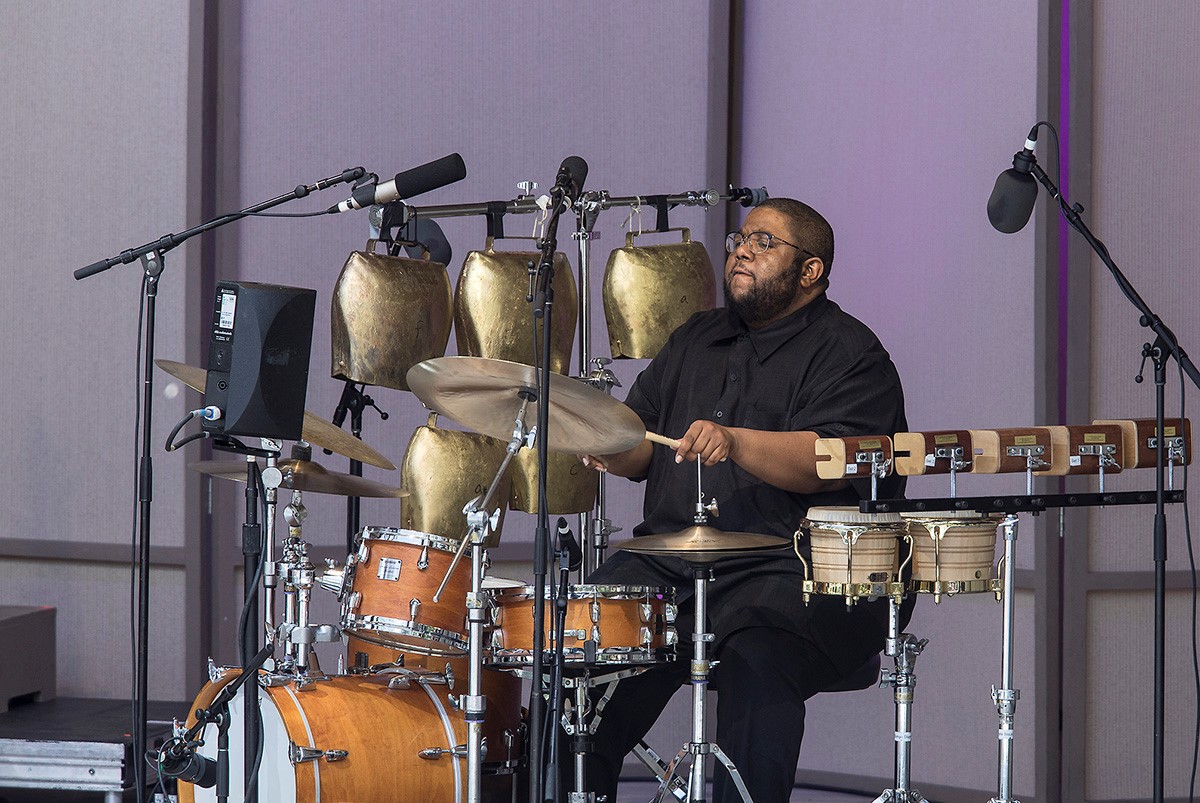
Congratulations to our friend and collaborator Tyshawn Sorey on his appointment as a MacArthur Fellow. Tyshawn’s astonishing creativity has been so evident in Ojai for the last two Festivals – 2016 with Peter Sellars and Julia Bullock, and in 2017 with Vijay Iyer (Sellars and Iyer are themselves MacArthur Fellows). Ojai is an incubator for artists and music, and we can all be proud to see these so honored and recognized with this exciting award. Wonderful and well-deserved news, Tyshawn.” – Thomas W. Morris
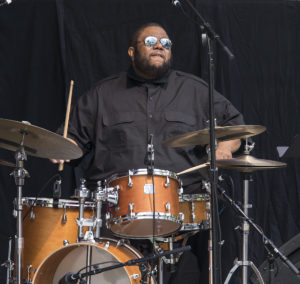
The MacArthur Foundation recently announced their Class of 2017 recipients popularly referred to as a “genius grant.” This esteemed list included two-time Festival alum Tyshawn Sorey. A release from The John D. and Catherine T. MacArthur Foundation cited Sorey for “assimilating and transforming ideas from a broad spectrum of musical idioms and defying distinctions between genres, composition, and improvisation in a singular expression of contemporary music.”
The Foundation website summarizes Tyshawn’s work:
A virtuosic percussionist and drum set player who is fluent in piano and trombone, Sorey is an ever-curious explorer of the nature of sound and rhythm, ensemble behavior, and the physicality of live performance. He erodes distinctions among musical genres as well as the line between composition and improvisation and incorporates sophisticated rhythmic and harmonic phrasing, highly prescribed improvisational sound worlds, and real-time experimentation with sound, among many other structural elements. At the same time, he possesses a refined sense of restraint and balance that allows him to maintain his own unique voice while bringing a vast array of musical settings to life. He explores various World and Eastern musical and philosophical concepts on his albums Koan (2009) and Alloy (2014), employing musical languages that range from slowly developing tonally and pantonally based music to free atonal pieces that contain irregular rhythms, lyrical phrasing, and distinctive pacing. Inner Spectrum of Variables (2015) features an extended composition in six movements that merges the harmonic and melodic vocabularies of Western classical, American, and Ethiopian creative expressions, free improvisation, and twentieth-century avant-garde musical traditions. In his song cycle Perle Noire: Meditations for Josephine (2016), Sorey reimagines the legendary Josephine Baker’s works; his original recreations of songs sung by Baker reflect both the context of her contributions to the civil rights movement and contemporary incidences of racial injustice. Sorey challenges expectations of jazz piano trio performance on Verisimilitude (2017), a set of five abstract, enigmatic, and austere pieces in which the delineation between spontaneous and formal composition is even more obscured.
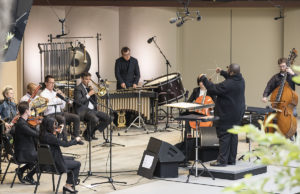 In addition to his own work as a composer, conductor, and ensemble leader, Sorey’s prowess as a percussionist and drum set player is well known, and he continues to be in high demand as a sideman for popular creative artists. With his genre-free approach to making music and continuous experimentation, Sorey is rapidly emerging as a singular talent in contemporary musical composition and performance.
In addition to his own work as a composer, conductor, and ensemble leader, Sorey’s prowess as a percussionist and drum set player is well known, and he continues to be in high demand as a sideman for popular creative artists. With his genre-free approach to making music and continuous experimentation, Sorey is rapidly emerging as a singular talent in contemporary musical composition and performance.
The Ojai Music Festival congratulates Tyshawn for joining the ranks of these creative and forward-thinking individuals. Read more here >
“It’s like a dream – to be able to play and hear my most beloved musical pieces of our time over the course of only a few days, and to share it with the audience members of the most vibrant and progressive festival on the American continent – Ojai. These pieces changed my life; I hope ¬ they will find a very special place also in your souls.” – Patricia Kopatchinskaja
“When I first met Patricia Kopatchinskaja, I knew she was a natural to be Music Director of the Ojai Music Festival. Her unstoppable energy, blazing virtuosity, and relentless curiosity are irresistible, as she demonstrated at the Festival’s Ears Open event in Ojai a year ago. The 2018 Festival will be a showcase of her creativity – as a violinist, as a collaborator, as a programmer, and as a commentator on our time. Patricia sees music in the context of today’s social and political issues so the 2018 Festival is one that will surely offer confrontation, questioning, and healing.” – Thomas W. Morris
The Ojai Music Festival is proud to present Patricia Kopatchinskaja as Music Director of the 2018 Festival (June 7-10) in her West Coast debut. Joining Patricia, will be the Mahler Chamber Orchestra in its first extended United States residency.
The Mahler Chamber Orchestra was founded in 1997 based on the shared vision of being a free and international ensemble, dedicated to creating and sharing exceptional experiences in classical music. With 45 members spanning 20 different countries at its core, the MCO works as a nomadic collective of passionate musicians uniting for specific tours in Europe and across the world. Based in Berlin, the Mahler Chamber Orchestra forms the basis of the Lucerne Festival Orchestra and has long and fruitful artistic relationships with major artists, including Patricia and Mitsuko Uchida, Ojai’s 2021 Music Director.
In Ojai, the Mahler Chamber Orchestra will be featured both as an orchestral ensemble, and also as a showcase for the superb solo and chamber music artistry of its members.
Major 2018 Festival projects include two staged concerts designed by Patricia. The first is Bye Bye Beethoven, which she describes as a commentary on “the irrelevance of the classic concert routine for our present life.” This staged program features a mash-up of music by Charles Ives, John Cage, Joseph Haydn, György Kurtág, Johann Sebastian Bach, and the Beethoven Violin Concerto. Her second semi-staged concert is her own provocative commentary on the inevitable consequences on the planet of global warming. Titled Dies Irae, the program includes music by Heinrich Ignaz Franz Biber, Michael Hersch, Byzantine chant, Giacinto Scelsi, and Galina Ustvolskaya’s remarkable Dies Irae for eight double basses, piano, and wooden coffin.
A new piece by American composer Michael Hersch – described by him as a dramatic cantata for two sopranos and eight instrumentalists – will receive its world premiere at the 2018 Festival, with subsequent performances at Cal Performances’ Ojai at Berkeley and at Great Britain’s venerable Aldeburgh Festival. Hersch, who wrote a violin concerto for Patricia two years ago, is considered one of the most gifted composers of his generation and is a formidable pianist. He currently serves on the composition faculty at the Peabody Institute of the Johns Hopkins University. This new work is a co-commission by the Ojai Music Festival, Cal Performances Berkeley, the Aldeburgh Festival, and PNReview, the prominent British poetry magazine at which Hersch is artist-in-residence.
Additional programming highlights include Kurtag’s Kafka Fragments; Stravinsky’s L’Histoire du Soldat on the occasion of its centennial; major chamber and piano music by Galina Ustvolskaya; as well as Roumanian and Moldavian folk music performed by Patricia and her parents, Viktor and Emilia Kopatchinski on cimbalom and violin. The Festival closes with the Ligeti Violin Concerto performed by Patricia.
Purchase 2018 Series Passes here
Additional details will be announced in the fall.
Patricia Kopatchinskaja, 2018 Music Director
Violinist Patricia Kopatchinskaja’s versatility shows itself in her diverse repertoire, ranging from Baroque and Classical often played on gut strings, to new commissions and re-interpretations of modern masterworks. Ms. Kopatchinskaja first visited Ojai in April 2016 as a guest on the Festival’s off-season “Open Ears” speaker series.
A celebrated collaborator, guest artist, and chamber musician, Ms. Kopatchinskaja’s current season highlights include the opening concerts of the new SWR Symphonieorchester with whom she performed Peter Eötvös’ DoReMi Violin Concerto (with the composer himself conducting); an appearance with NDR Elbphilharmonie Orchestra as part of the inaugural performances of the new Elbphilharmonie concert hall in Hamburg; debuts with Rotterdam Philharmonic Orchestra and with Gothenburg Symphonys. Continuing her regular collaboration with the London Philharmonic Orchestra, she appears with them in London and New York under Vladimir Jurowski. György Ligeti’s Violin Concerto is a particular focus of Ms. Kopatchinskaja’s current season; she will perform the work widely including with the Berliner Philharmoniker.
Ms. Kopatchinskaja serves as Artist in Residence at four major European venues and festivals: at the Berlin Konzerthaus; at the Lucerne Festival (where she will be artiste étoile); at the Wigmore Hall in London; and at the Kissinger Sommer Festival, and is an Artistic Partner with The Saint Paul Chamber Orchestra, performing regularly with the ensemble both in Saint Paul and internationally.
A prolific recording artist, the last few seasons have seen a number of major releases by
Ms. Kopatchinskaja. Her release for Naïve Classique featuring concerti by Bartók, Ligeti and Peter Eötvös won Gramophone’s Recording of the Year Award in 2013, an ECHO Klassik Award and a 2014 Grammy nomination. Her recently released “Take Two” on Alpha has garnered critical acclaim worldwide.
Grant Manager
Ojai Music Festival Grants Manager
Internationally regarded as one of the most influential annual classical music events, the Ojai Music Festival has long served as a creative musical laboratory for artists, composers and audiences alike to explore new and unfamiliar repertoire. The Festival uniquely combines the intimate setting of Ojai with artists performing innovative programs over an extended weekend to create an immersive experience. The Festival is committed to fostering a positive and dynamic culture among the performers, artistic staff, administrative staff, audience, volunteers, and the Ojai community. In addition, the Festival’s BRAVO education & community program actively teaches area youth about music and how it relates to other core curriculum subjects, as well as enriches the lives of the local elderly community. The Festival successfully led a community effort to raise $4 million to rebuild Libbey Bowl, which held its grand opening at the June 2011 Festival.
The Festival’s Grants Manager reports to the Director of Development and will work directly with the President and Artistic Director as needed to write, identify and solicit funding to meet the Festival’s $250,000 foundation budget (approximately 15-20 grants annually).
Overall Scope of Responsibilities:
- Write and develop grant proposals for foundations and other grant-making organizations, effectively communicating the Festival’s mission, programs, and goals to potential funders
- Identify new potential sources of funding from foundations, state and federal agencies, and corporate entities
- Manage and maintain the Festival grants calendar to ensure timely submissions of proposals, letters of inquiry, and all progress and final reports
- Assist Director of Development to build and maintain relationships with foundation contacts and program officers
- Ensure prompt acknowledgement of gifts in coordination with the Director of Development
- Stay up-to-date on the Festival’s program developments and outcomes, present and future artistic plans, and organizational needs
- Keep long-term organizational goals in mind to work to further develop and expand the Festival’s grant program
- Be available during the annual music festival and assist as necessary (2nd Thursday-Sunday in June)
Skills, Knowledge, and Abilities:
- A BA or equivalent degree (Music, English or Business degree preferred)
- Proven interest in the arts with music preferred
- 3+ years of proven recent grant writing experience, background in arts/music, (contemporary music a plus)
- Ability to write grants for both small and large regional, national, and international foundations and entities
- Strong general knowledge of Southern California Foundations a great benefit
- Proven ability to prioritize and manage multiple time-sensitive deadlines
- Reputation among funders as being a well liked yet persuasive and successful advocate
- Able to work independently with minimal supervision and able resourcefully utilize necessary staff/resources to source information and find effective solutions
- Creativity in finding new granting opportunities for the Festival’s unique location and program objectives
- Excellent organizational skills and attention to detail
- Exceptional communication and writing skills
Supervisor: Director of Development
Part-Time position: Approximately 8-10 hours/week with generous time off. Attendance at four-day festival essential. Ability to make visits to Ojai office a minimum of two times per month, remote working options are available for remaining days. Compensation commensurate with experience.
To Apply: Please submit your resume and a copy of a grant proposal written in the past 18 months to Anna Wagner, [email protected].
Mahler Chamber Orchestra
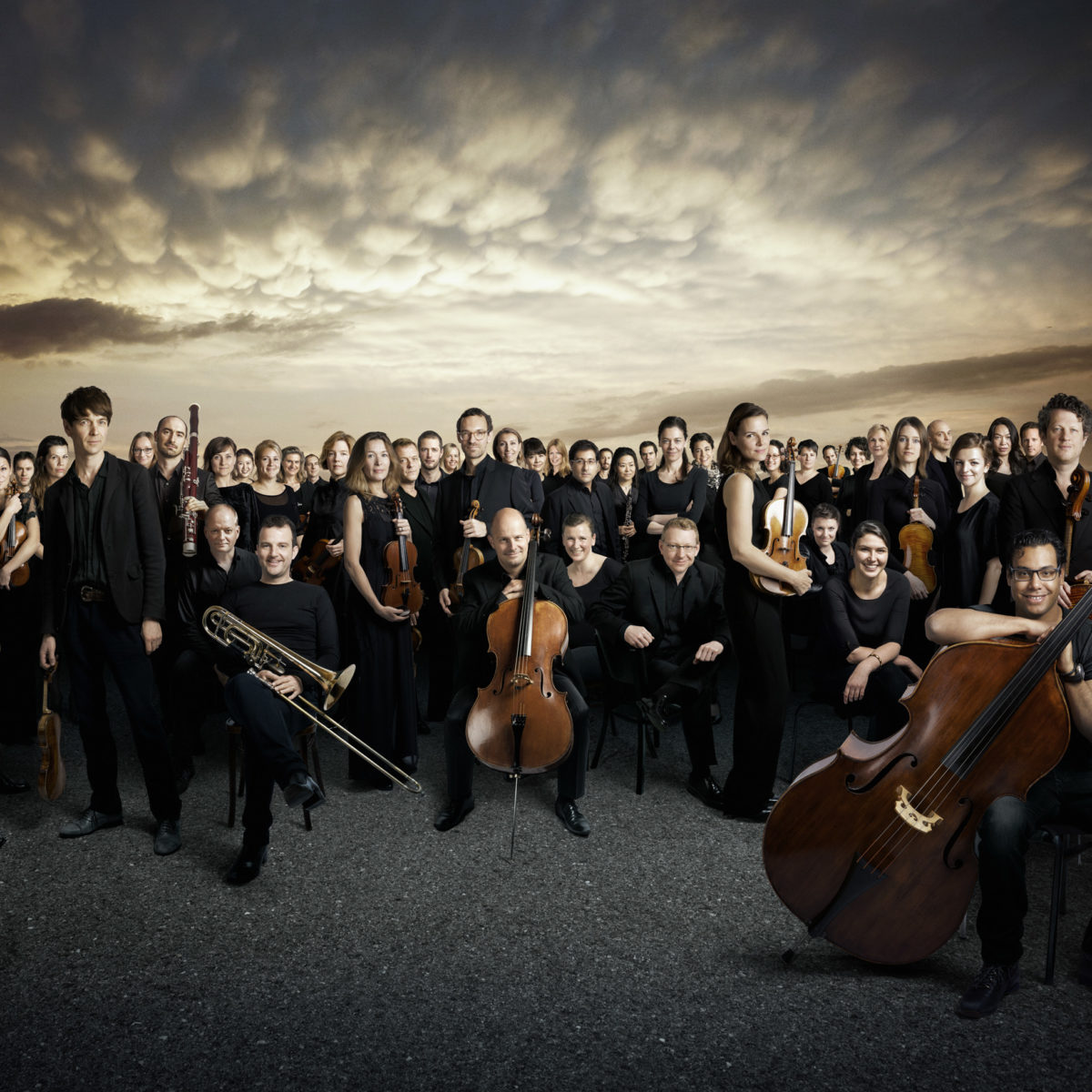
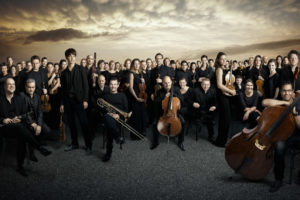
The Mahler Chamber Orchestra (MCO) was founded in 1997 based on the shared vision of being a free
and international ensemble, dedicated to creating and sharing exceptional experiences in classical
music. With 45 members spanning 20 different countries at its core, the MCO works as a nomadic
collective of passionate musicians uniting for specific tours in Europe and across the world. The
orchestra is constantly on the move: it has, to date, performed in 36 countries across five
continents. It is governed collectively by its management team and orchestra board; decisions are
made democratically with the participation of all musicians.
The MCO’s sound is characterized by the chamber music style of ensemble playing among its alert and
independent musical personalities. Its core repertoire, ranging from the Viennese classical and
early Romantic periods to contemporary works and world premieres, reflects the MCO’s agility in
crossing musical boundaries.
The orchestra received its most significant artistic impulses from its founding mentor, Claudio
Abbado, and from Conductor Laureate Daniel Harding. Pianist Mitsuko Uchida, violinist Isabelle
Faust and conductor Teodor Currentzis are current Artistic Partners who inspire and shape the
orchestra during long-term collaborations. In 2016, conductor Daniele Gatti was appointed Artistic
Advisor of the MCO. Concertmaster Matthew Truscott leads and directs the orchestra regularly in its
performances of chamber orchestra repertoire.
MCO musicians all share a strong desire to continually deepen their engagement with audiences. This
has inspired a growing number of offstage musical encounters and projects that bring music,
learning and creativity to communities across the globe. Feel the Music, the MCO’s flagship
education and outreach project, has opened the world of music to deaf and hard of hearing children
through interactive workshops in schools and concert halls since 2012. MCO musicians are equally
committed to sharing their passion and expertise with the next generation of musicians: since 2009,
they have, through the MCO Academy, worked with young musicians to provide them with a high quality
orchestral experience and a unique platform for networking and international exchange.
In recent years, the MCO’s major projects have included the award-winning Beethoven Journey with
pianist Leif Ove Andsnes, who led the complete Beethoven concerto cycle from the keyboard in
international residences over four years, and the opera production Written on Skin, which the MCO
premiered at Festival d’Aix en Provence under the baton of composer George Benjamin, performed at
Mostly Mozart Festival in New York and toured, as a semi-staged concert production, to major
European cities. In 2016, the MCO and Mitsuko Uchida embarked on a multiple-season partnership
centred on Mozart’s piano concertos. Upon the conclusion of a complete cycle of Beethoven
symphonies, the MCO and Daniele Gatti continue their focus on Robert Schumann’s symphonic work.
The Mahler Chamber Orchestra looks forward to a diverse array of projects in spring 2018, including
appearances at major festivals worldwide. Highlights include two tours led by Artistic Advisor
Daniele Gatti focusing on symphonic repertoire; the launch of a long-term partnership with
Heidelberger Frühling; the MCO’s first US residency, at Ojai Music Festival, in collaboration with
its 2018 Music Director Patricia Kopatchinskaja; a semi- staged concert performance of George
Benjamin’s Written on Skin at Holland Festival; and the MCO’s debut at Audi Sommerkonzerte, where
it shares the stage with violinist Pekka Kuusisto in an open-air concert.
The Mahler Chamber Orchestra has been awarded the Special Mention Prize of the German Design Award
2017 in recognition of its brand identity.
Michael Hersch, Composer
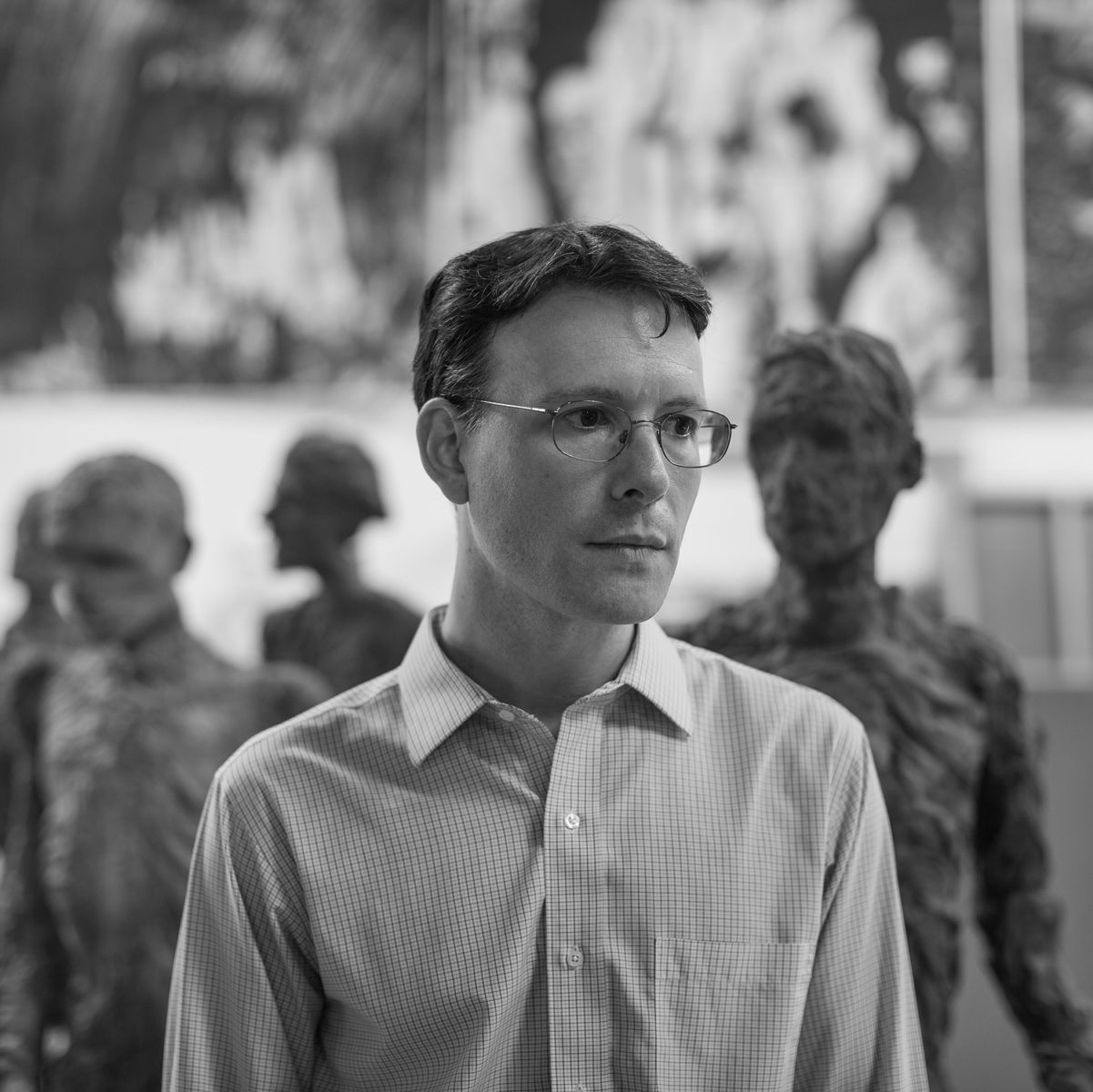
“one of the most fertile musical minds to emerge in the U.S. over the past generation” – The Financial Times
“a natural musical genius who continues to surpass himself” – The Washington Post
“masterly modernist music of implacable seriousness” –The New Yorker
“Hersch’s language never hesitates to leap into the abyss – and in ways that, for some listeners, go straight to parts of the soul that few living composers touch.” – The Philadelphia Inquirer
MICHAEL HERSCH
Described by The New York Times as a composer of works “often startling in their complexity, beauty and demonic fury,” Michael Hersch’s music been performed in the U.S. and abroad under conductors including Mariss Jansons, Alan Gilbert, Marin Alsop, Robert Spano, Carlos Kalmar, Yuri Temirkanov, Giancarlo Guerrero, and James DePreist; with the major orchestras of Cleveland, Saint Louis, Pittsburgh, Atlanta, Baltimore, Dallas, Seattle, and Oregon, among others; and ensembles including the String Soloists of the Berlin Philharmonic, the Chamber Orchestra of Philadelphia, Ensemble Klang, the Kreutzer Quartet, the Blair Quartet, NUNC, and the Network for New Music Ensemble. In recent years he has worked closely with violinist Patricia Kopatchinskaja, who has commissioned several works from him, including his Violin Concerto. Hersch has also written for such soloists as Thomas Hampson, Midori, Garrick Ohlsson, Shai Wosner, Miranda Cuckson, Béla Fleck, and Boris Pergamenschikow.
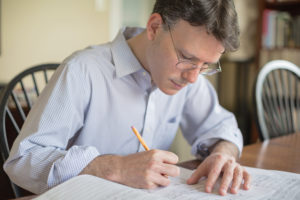 His solo and chamber works have appeared on programs around the globe – from the Chamber Music Society of Lincoln Center and Carnegie Hall in the U.S. to Germany’s Schloss Neuhardenberg Festival in Brandenberg and the Philharmonie in Berlin; from the U.K.’s Dartington New Music Festival and British Museum to Italy’s Romaeuropa and Nuova Consonanza Festivals. Performances in the far east include those with the Singapore Symphony Orchestra and Japan’s Pacific Music Festival.
His solo and chamber works have appeared on programs around the globe – from the Chamber Music Society of Lincoln Center and Carnegie Hall in the U.S. to Germany’s Schloss Neuhardenberg Festival in Brandenberg and the Philharmonie in Berlin; from the U.K.’s Dartington New Music Festival and British Museum to Italy’s Romaeuropa and Nuova Consonanza Festivals. Performances in the far east include those with the Singapore Symphony Orchestra and Japan’s Pacific Music Festival.
Recent and upcoming premieres include his Violin Concerto, with the Saint Paul Chamber Orchestra, the Avanti Festival in Helsinki, and the Lucerne Festival in Switzerland; the NYC premiere of Zwischen Leben und Tod, at the newly established National Sawdust, new productions in Chicago, Washington, and Salt Lake City of his monodrama, On the Threshold of Winter, described by The Baltimore Sun as a work of “great originality, daring, and disturbing power.” The monodrama premiered in 2014 at the Brooklyn Academy of Music. Of the premiere The New York Times noted: “Death casts a long shadow over the recent work of Mr. Hersch … But in On the Threshold of Winter Mr. Hersch has given himself the space to burrow past anger and incomprehension in search of an art fired by empathy and compassion.” Over the past several years, Hersch has also written new works for the Orpheus Chamber Orchestra, Alban Berg Ensemble Wien, the Library of Congress, and Holland’s Ensemble Klang. Other notable recent events include European performances by the Kreutzer Quartet of Images From a Closed Ward in the U.K. and Sweden, and the premiere of Of Sorrow Born: Seven Elegies, a work for solo violin commissioned by the New York Philharmonic, premiered at the orchestra’s Biennial.
Born in Washington D.C. in 1971, Michael Hersch came to international attention at age twenty-five, when he was awarded First Prize in the Concordia American Composers Awards. The award resulted in a performance of his Elegy, conducted by Marin Alsop in New York’s Alice Tul-ly Hall. Later that year he became one of the youngest recipients ever of a Guggenheim Fellow-ship in Composition. Mr. Hersch has also been the recipient of the Rome Prize, the Berlin Prize, the Goddard Lieberson Fellowship from the American Academy of Arts & Letters, and many other honors.
Also a gifted pianist, Mr. Hersch has appeared around the world including appearances at the Van Cliburn Foundation’s Modern at the Modern Series, the Romaeuropa Festival, the Phillips Collection in Washington D.C., Cleveland’s Reinberger Chamber Hall, the Festival of Contem-porary Music Nuova Consonanza, the Warhol Museum, the Network for New Music Concert Se-ries, the Left Bank Concert Society, Festa Europea della Musica, St. Louis’ Sheldon Concert Hall, and in New York City at Merkin Concert Hall, the 92nd St. Y Tisch Center for the Performing Arts, and Carnegie Hall’s Weill Recital Hall, among others. Mr. Hersch currently serves as chair of the composition faculty at the Peabody Institute of the Johns Hopkins University.
2017 Festival Reviews
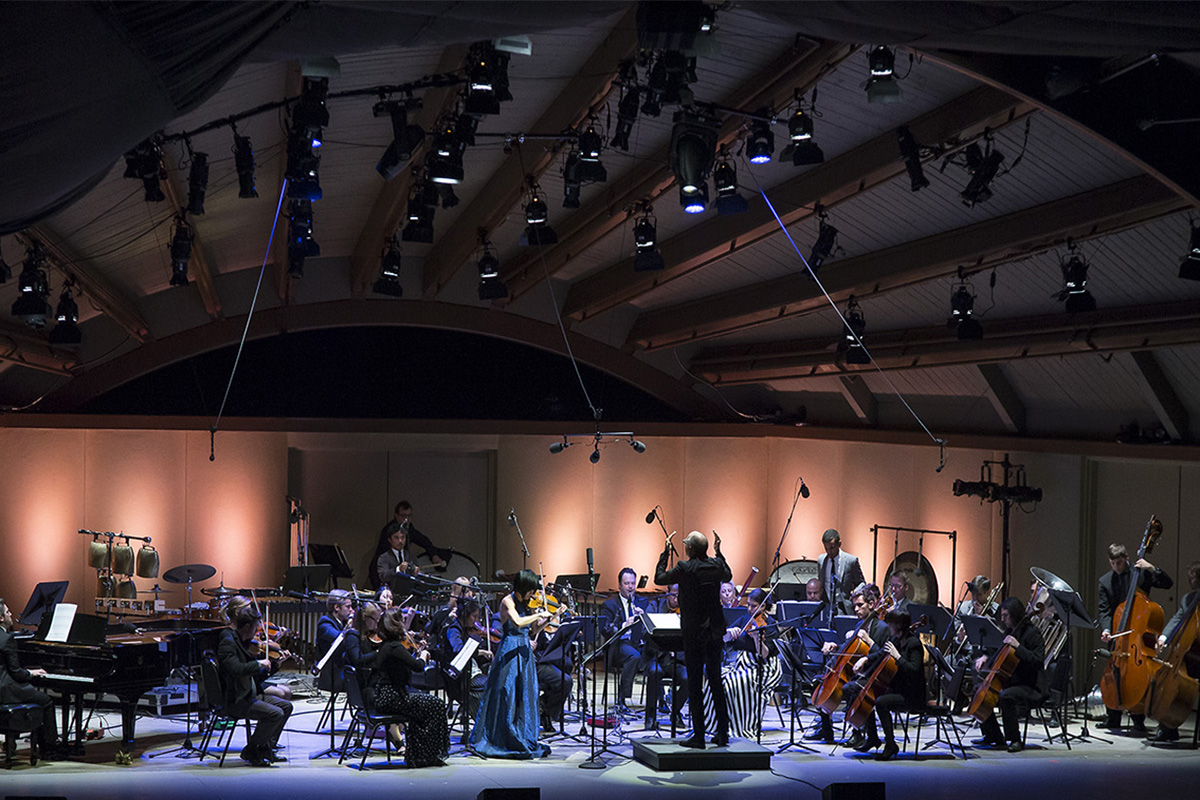
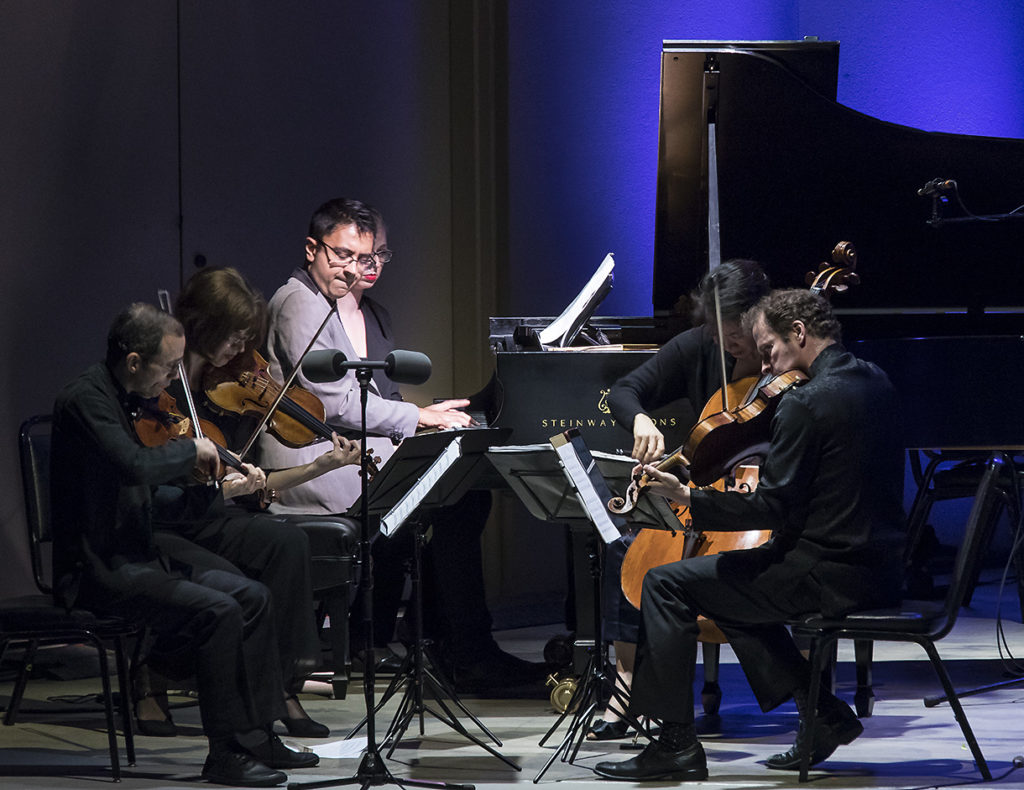
The 2017 Ojai Music Festival with Music Director Vijay Iyer embodied the spirit of the Festival with an openness to discovery and stretching musical boundaries. This year as Vijay expressed the 71st edition was an opportunity to bring various communities together. Relive the 2017 Festival anytime by watching our archived live streaming concerts on our You Tube channel.
Feedback from our audience, artists, and members of the press is important to us. Read review excerpts, which we will continue to update as press reviews come in, or download the PDF version here.
[Vijay Iyer] made a festival with a history of daring and risk-taking become more vital and daring than ever. – San Diego Union-Tribune
The compelling feature was in what appeared to be Iyer’s own quest to find examples of how to take the next step and make the music your own.
For that he brought some of the great masters of day, with special and illuminating attention on Chicago’s Association for the Advancement of Creative Music. Friday night, Iyer presented the West Coast premiere of George Lewis’ brilliant 2015 opera, “Afterword,” written to commemorate the 50th anniversary of AACM” – Los Angeles Times
Over the weekend, we heard Iyer in multiple settings. He showed his ever-deepening attributes as a composer, most notably in the impressive world premiere of his engaging Violin Concerto, “Trouble,” for style-flexible virtuoso Jennifer Koh (whose late-night solo concert “Bach And Beyond,” melding Bach, Berio and others, was a bold highlight of the weekend). – DownBeat magazine
Proving once again that for the truly fearless, nothing is impossible, the 2017 Ojai Music Festival effectively erased the boundaries between jazz, classical, traditional Indian music, and more over the course of four sound-packed days in and around Libbey Bowl. – Santa Barbara Independent
Improvisation and invention from two continents staked out new ground somewhere in between. Was it jazz? Maybe. But as a whole, this year’s gathering in Ojai thrived under its long-held, suitably broad umbrella of “music festival,” and an excellent, engrossing one at that. Ultimately, those are the only labels that matter. – Los Angeles Times
Sharing Ojai: Insider Tips for Festival Goers
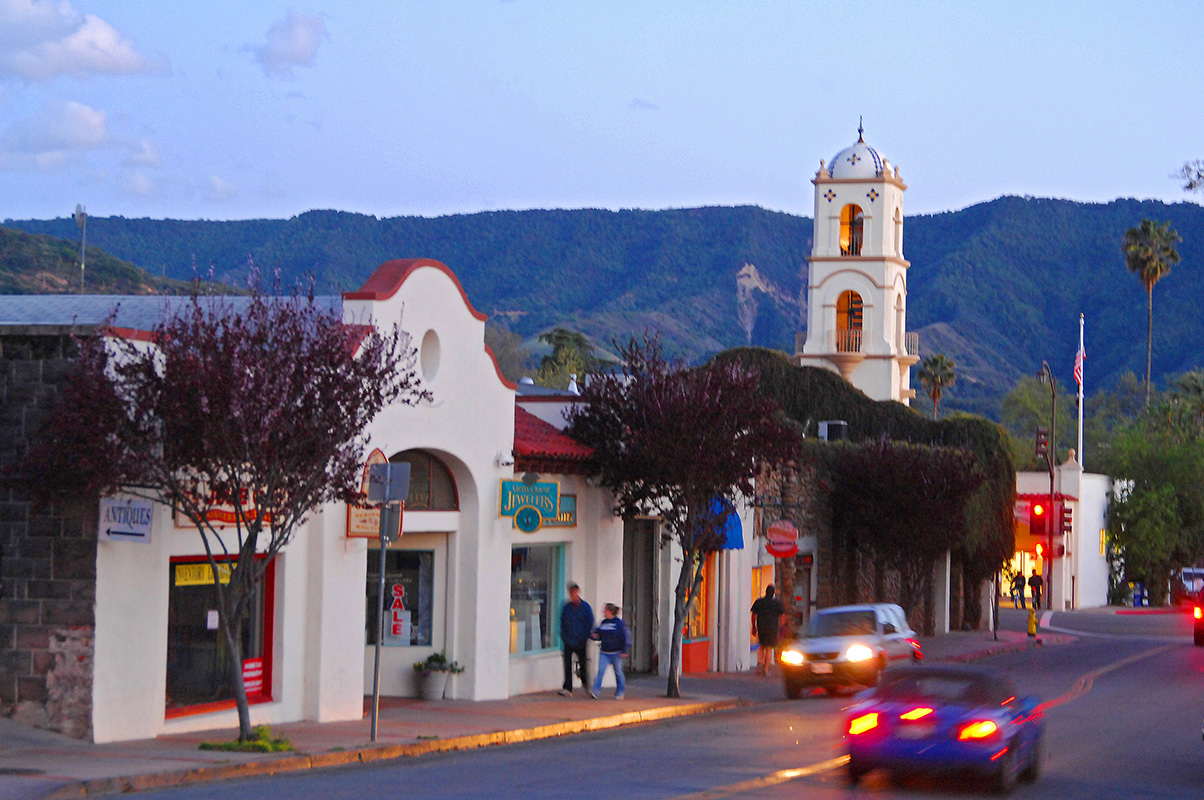
Freelance writer/fine art and antiques broker Leslie A. Westbrook covers Ojai and Ventura County for Ventana magazine and the Ventura County Reporter among other outlets.
She had been attending the Ojai Music Festival off and on for more than three decades. Her father – “under the radar” jazz pianist and composer Forrest Westbrook – joined her at the Festival during the later part of his life and became a fan as well. Leslie really wishes he was still alive to partake in this year’s jazzy fest— but he will be with her in spirit. We asked Leslie for some of her favorite spots and things to do in Ojai and she has a nice long list to share:
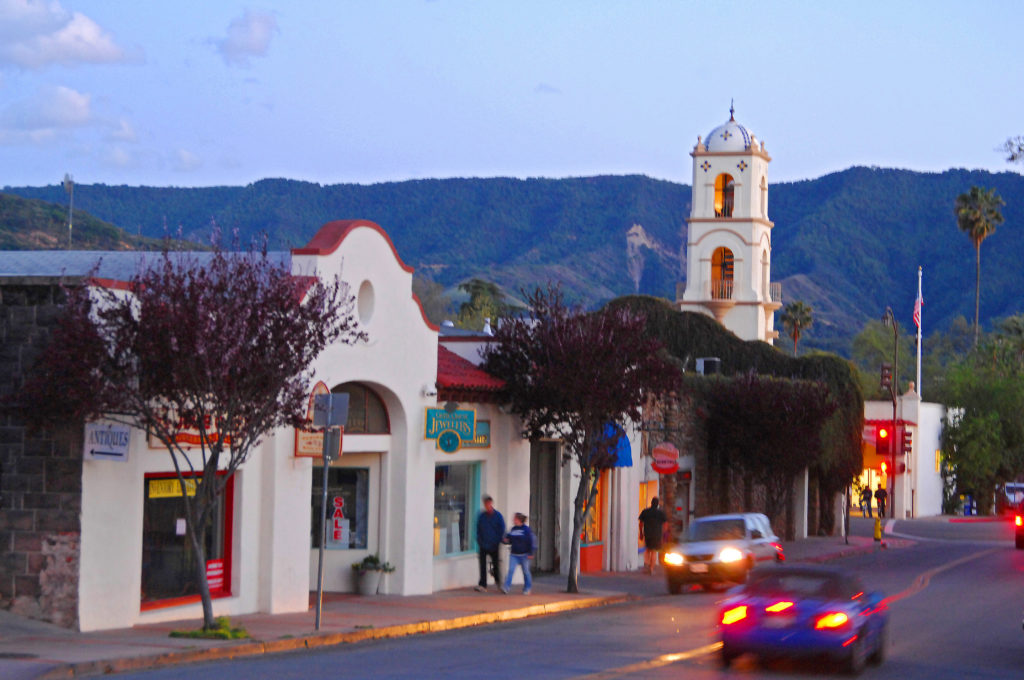
Music fans cannot live on music alone (well, almost) so what to do in-between concerts? Explore the valley and all it has to offer. Here are a few more reasons (as if you needed one!) to hit Ojai for the Festival this year.
EAT
For quick, casual but tasty Mexican, two hole-in-the wall spots popular with locals:
The pineapple tamales at La Fuente (tucked into the corner of a strip mall) are sweetly addictive, but there are six other flavors ranging from cheese and chili to corn or pork. Street tacos on homemade rosemary tortillas at Ojai Tortilla House satisfy – be prepared to wait in line and eat on the street (no tables here), or better yet, head to Libbey Park and grab a picnic table where you can also enjoy the Rio Negro II sound installation.
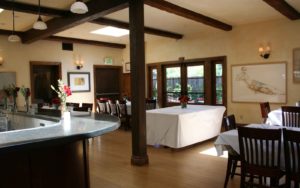
Quick nibble before the tennis court pre-concert chat and evening concert? Pop into Azu for tapas and beers. Looking for a great gluten-free meal – Food Harmonics is the new “kid on the block” right on the Arcade.
For a more leisurely meal, Suzanne’s is a long time favorite for concert goers (seafood entrees at dinner; salads at lunch); Nocciola is a wonderful alternative in town. Leave plenty of time so you don’t miss a concert to indulge in the tasting menus in this charmingly restored historic Craftsman bungalow – Bravo to owner/chef Pietro Biondi for bringing a tasty bit of Italy to Shangri-La.
DRINK
Wake UP! and smell the freshly roasted coffee sourced and roasted by the owners at Beacon Coffee Co. (new since last year’s fest) and a tasty savory or grab a cuppa java at longtime fave Ojai Roasting Co. The gigantic berry muffins at Ojai Café Emporium will hold you through morning concerts.
Midday refreshment? Grab a smoothie or healthy salads from the deli case at Rainbow Bridge – and people watch from a street side table.
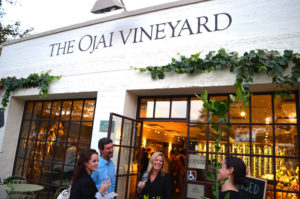
Pop in for a pre-concert wine tasting at The Ojai Vineyard tasting room – we’ve never had a bad wine from winemaker Adam Tolmach. At the Festival’s new “Pub in the Park” on Friday and Saturday night, Attitude Adjustment will have OV wines available for purchase.
PRAY/MEDITATE / CHILLAX
Ojai is famous as a spiritualist retreat and community, Krishnamurti lived here – visit the philosopher’s library and former home in Ojai’s East End. Or head to Meditation Mount for stunning views of the valley.
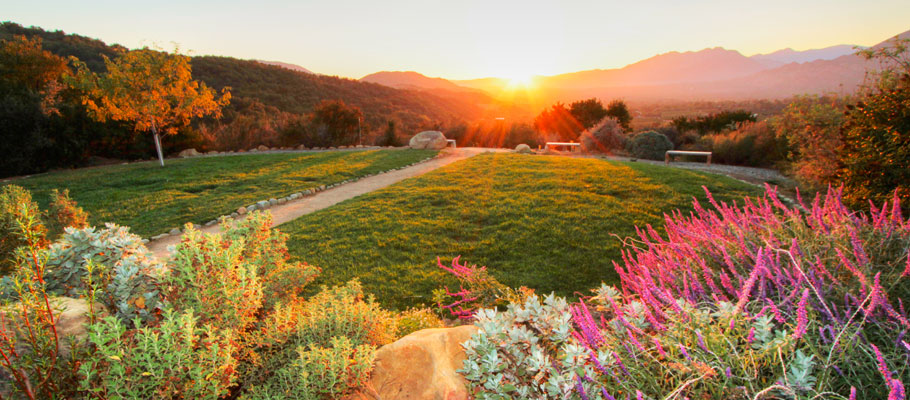
LOVE ART
From contemporary fine art to handmade pottery, Ojai prides itself on the talent in the valley. If you like what you see, plan to revisit Ojai during the annual Studio Artists Tour in the fall and visit studios and meet the artists.
The Porch Gallery shows cutting edge contemporary art, During the Festival check out its current exhibit – the Ojai Invitational 2017: “California Space & Light”, a collaboration with EMS Arts featuring selected works by Kelly Berg, Brad Howe, Andy Moses and Jennifer Wolf.
Ojai has an earthly side, too. Contemporary ceramics can be purchased at PSpace Pottery or take a drive up and over the grade to visit Ojai icon Beatrice Wood’s (1893-1998) pottery studio, who credited her longevity thusly: “I owe it all to art books, chocolates, and young men.”). We’d add good music.
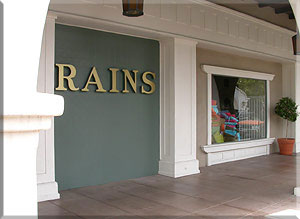
SHOP
De Kor & Co, is a great emporium for a mix of home wares, clothing and cool gifts. Rains is an old-fashioned department store and Ojai institution. Walk on through – for men and women’s clothing and a great kitchen department! Partake in olive oil tasting at former high fashion mode Carolina Gramm’s gorgeous shop – she flavors EVOO and vinegars as well with subtle flavors. Walnut balsamic vinegar is a fav, but find your own amidst the vast array.
STROLL
Don’t miss the Sunday Farmer’s Market – Mingle with locals and check out Ventura County’s rich cornucopia of flavorful, fresh organic produce. Nibble on popsicles in unique flavors (chili anyone?), chocolates made by a mother/daughter team, baked goods and other treats and you might even find Golden State papayas – who knew these tropical treats are raised in our region?
NATURE
Need to stretch? Hike Shelf Road – or take a drive 3 miles to stroll Taft Gardens to admire exotic and rare botanicals from Australia and beyond.
Last but not least, don’t miss Ojai’s famous Pink Moment – the magic glow at sunset that kisses the Topa Topa mountain range.
- Leslie A. Westbrook

